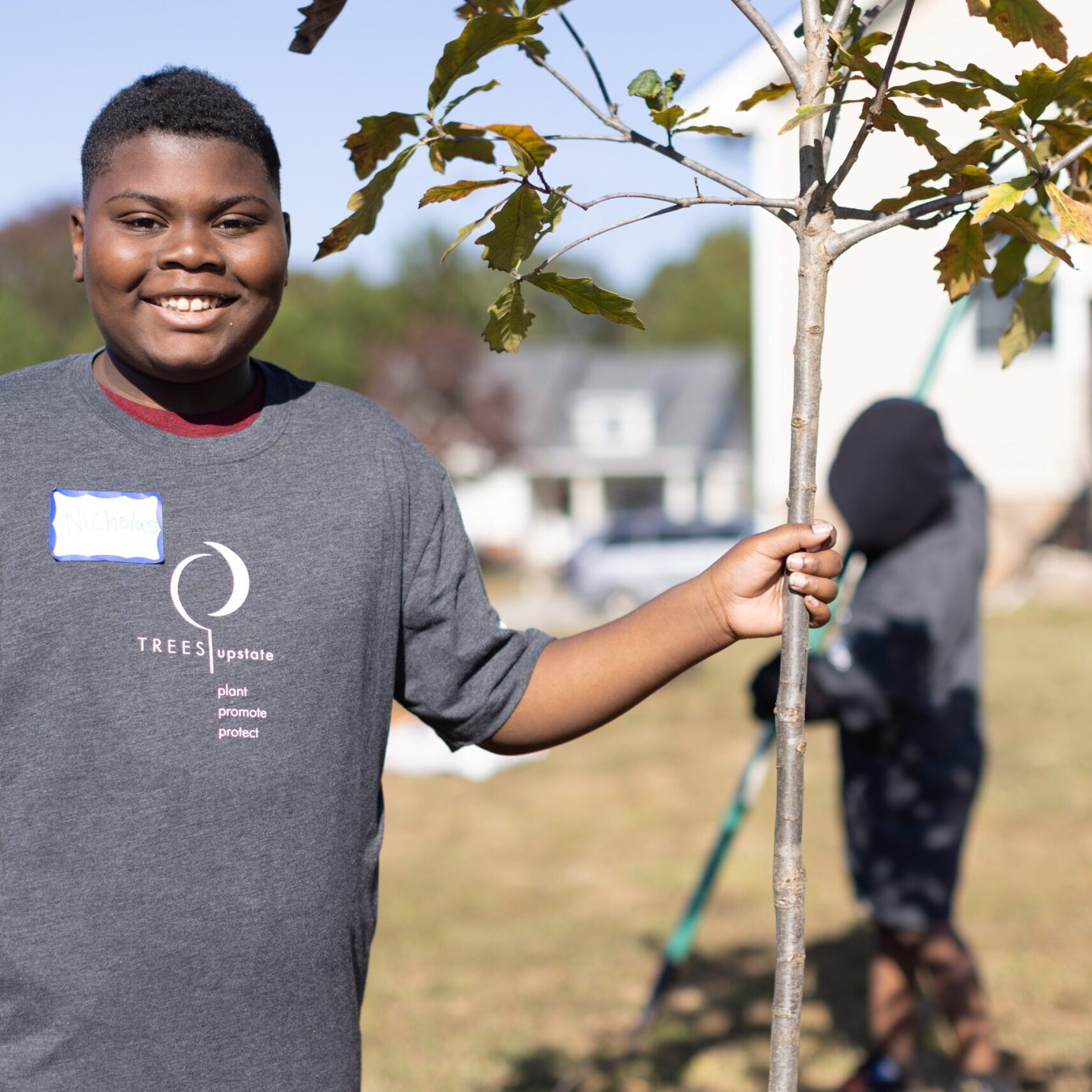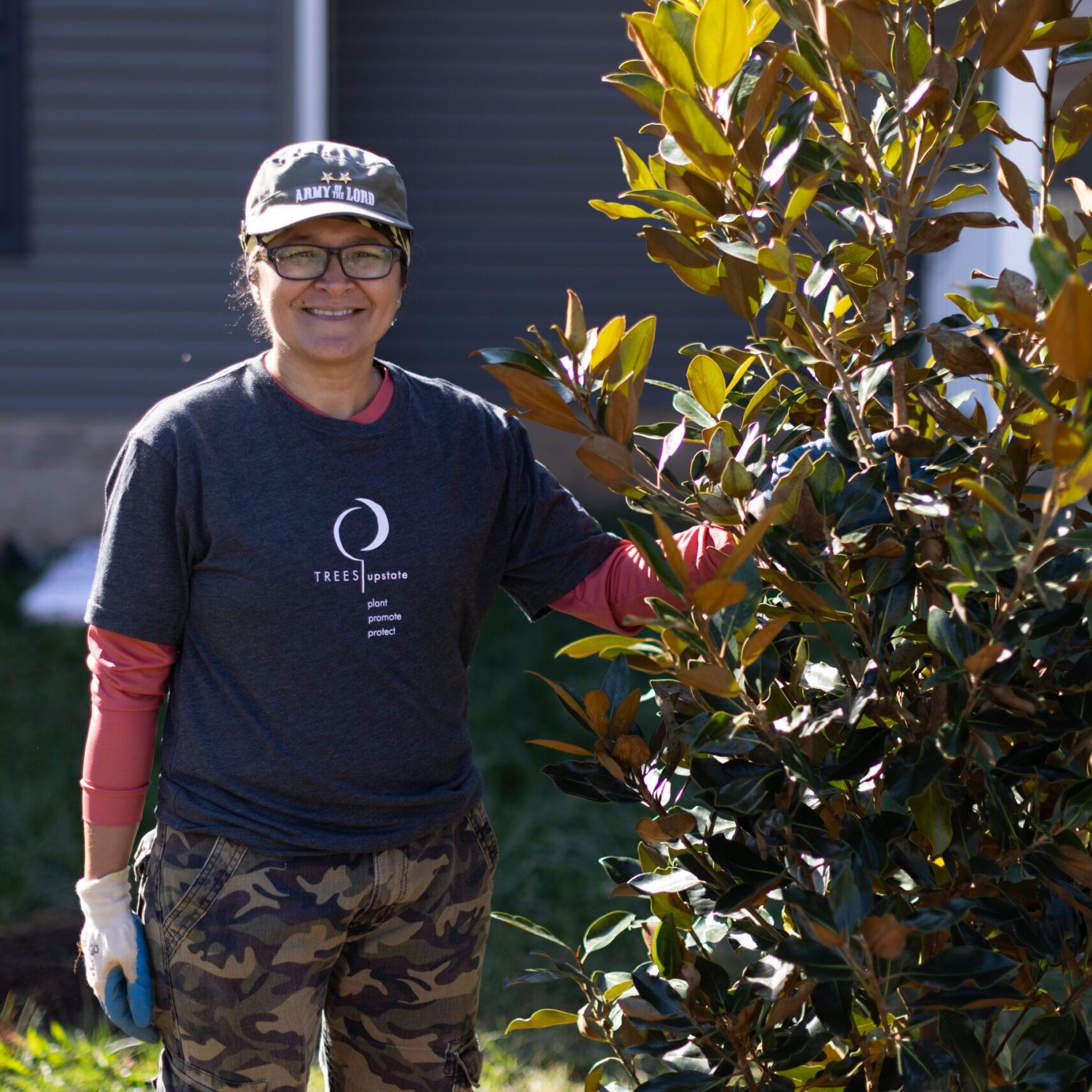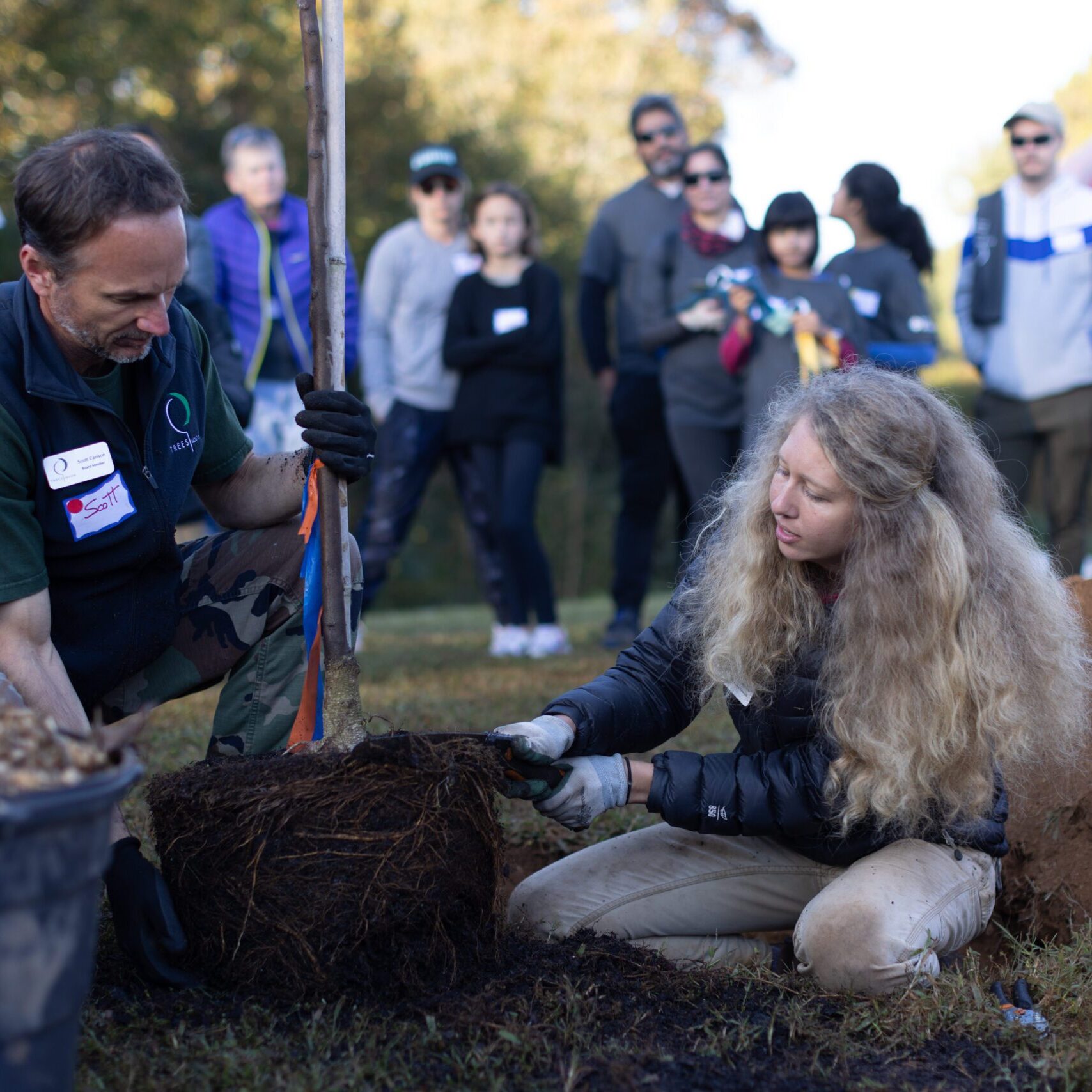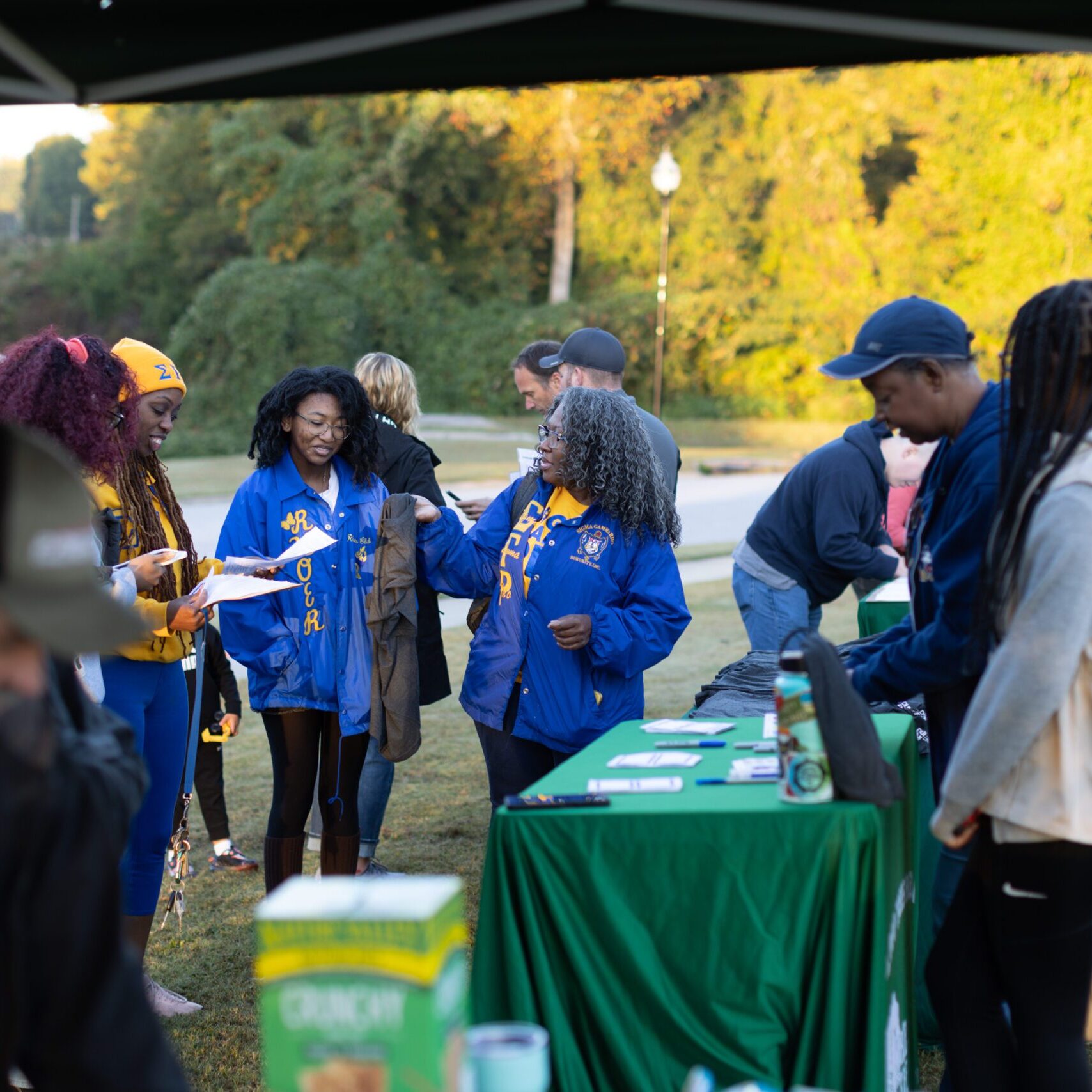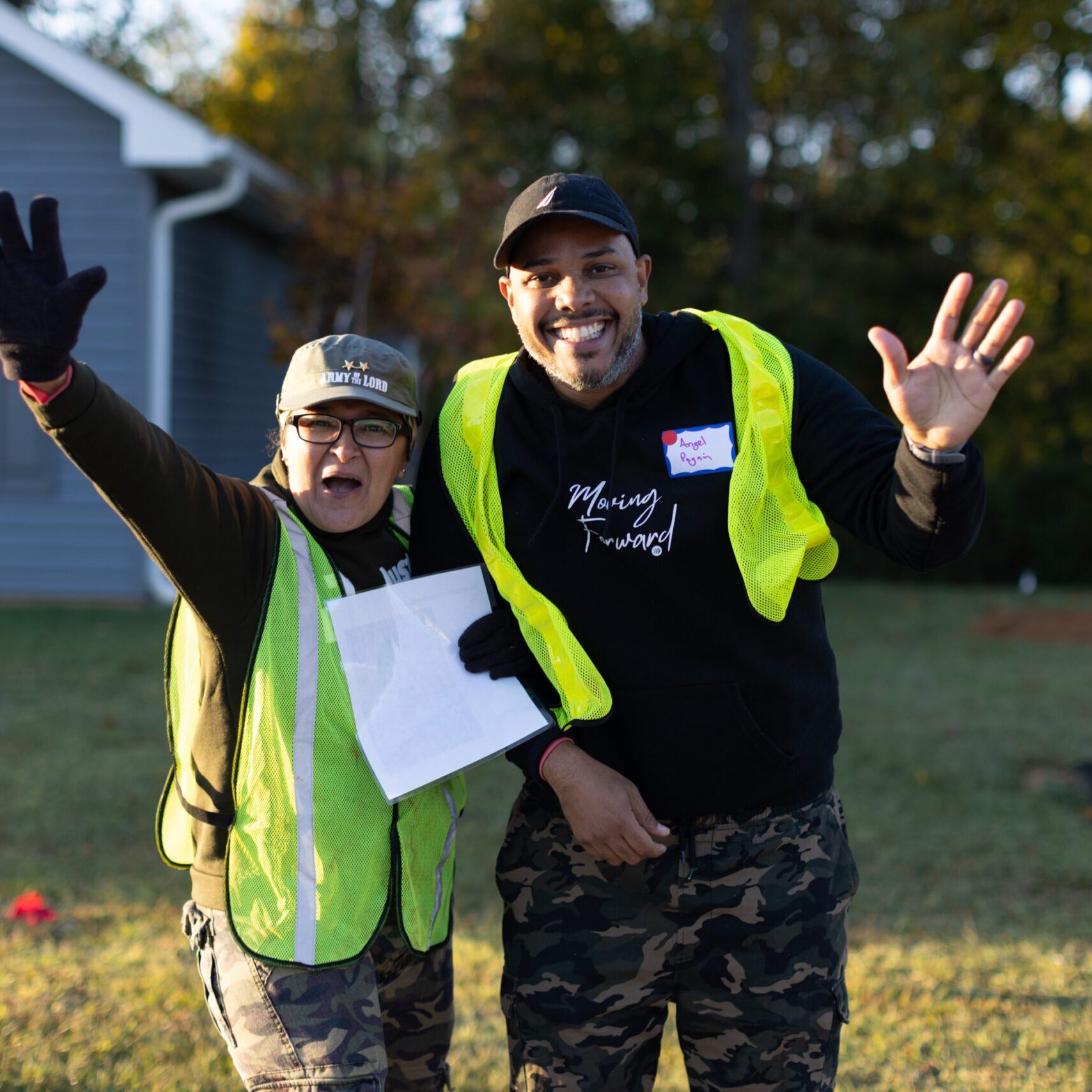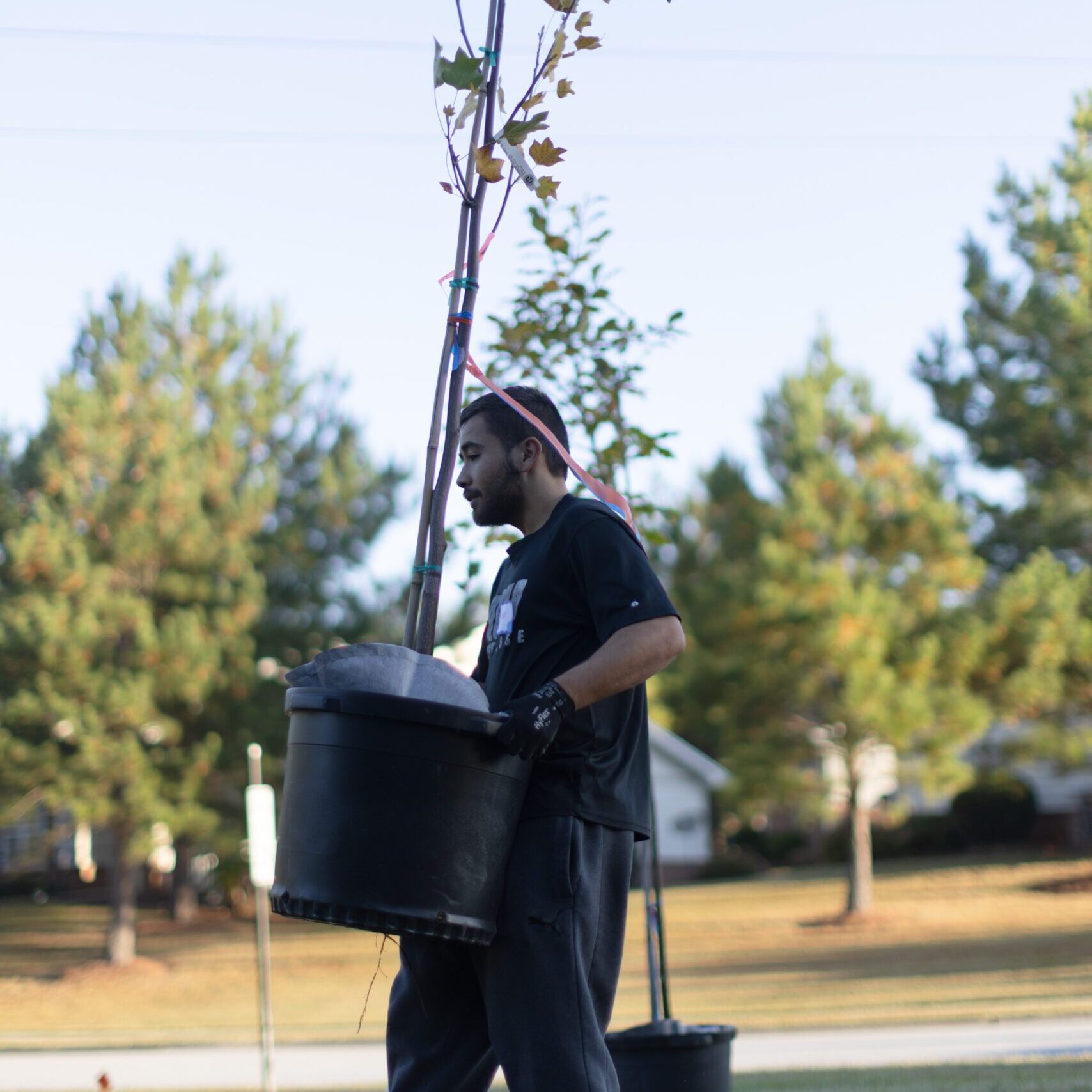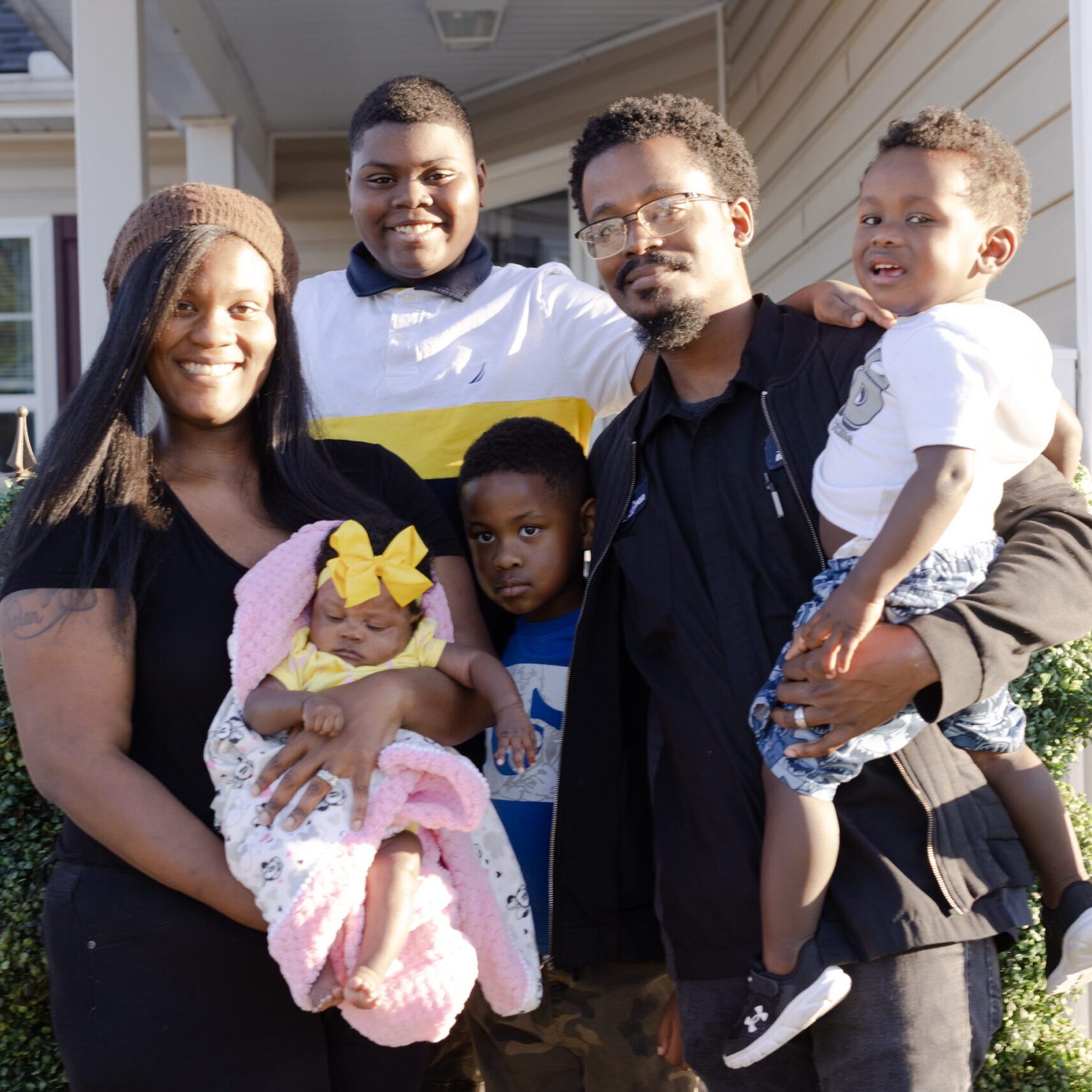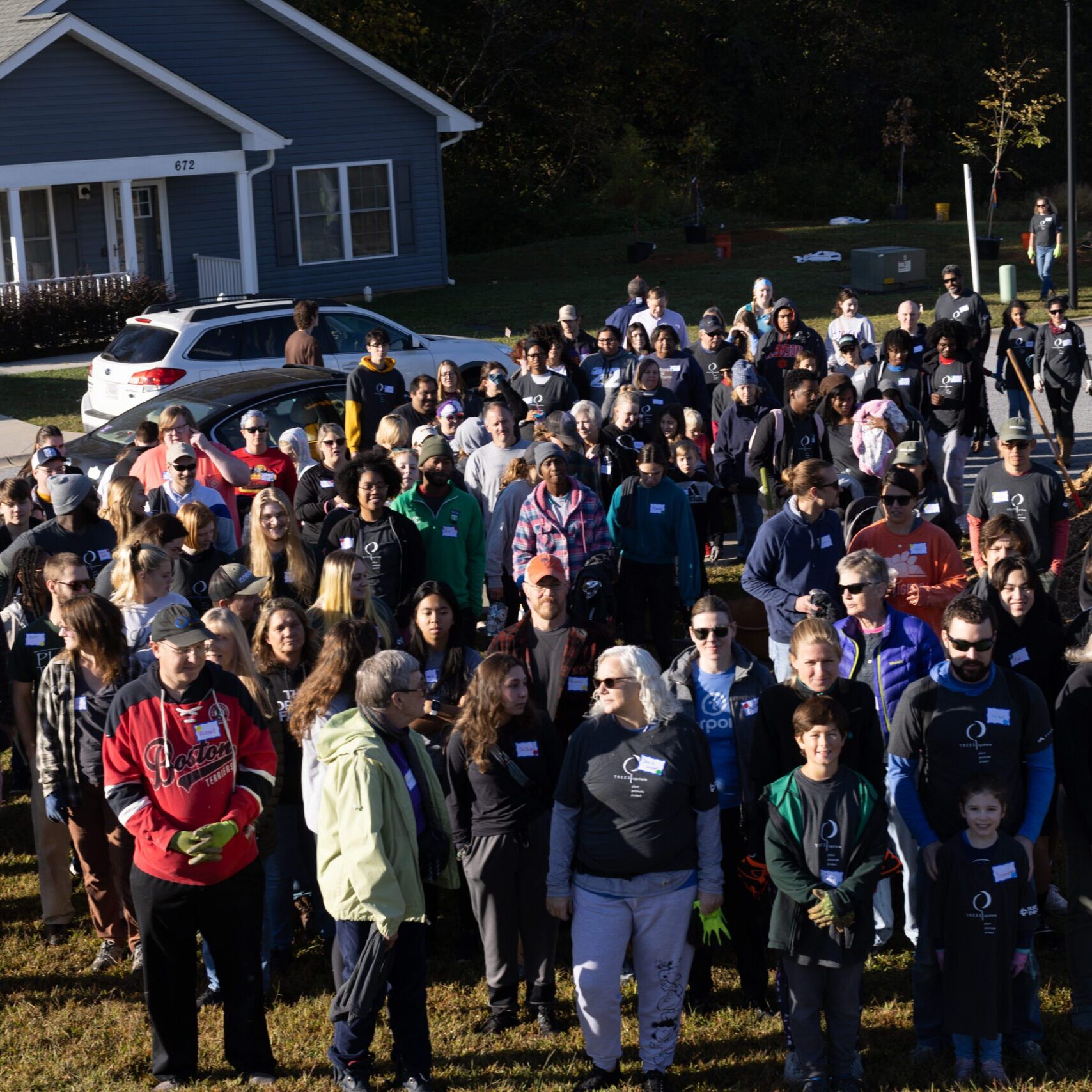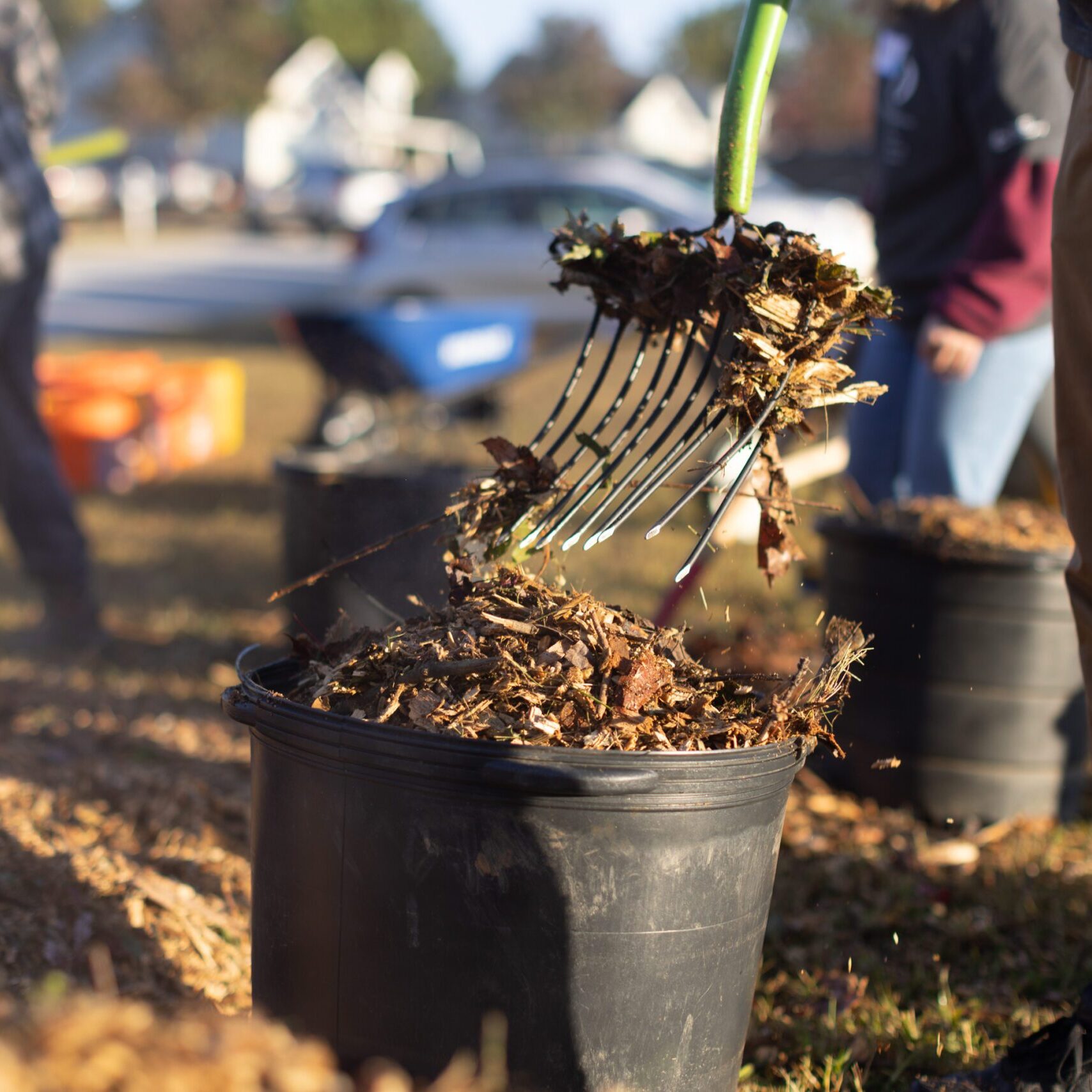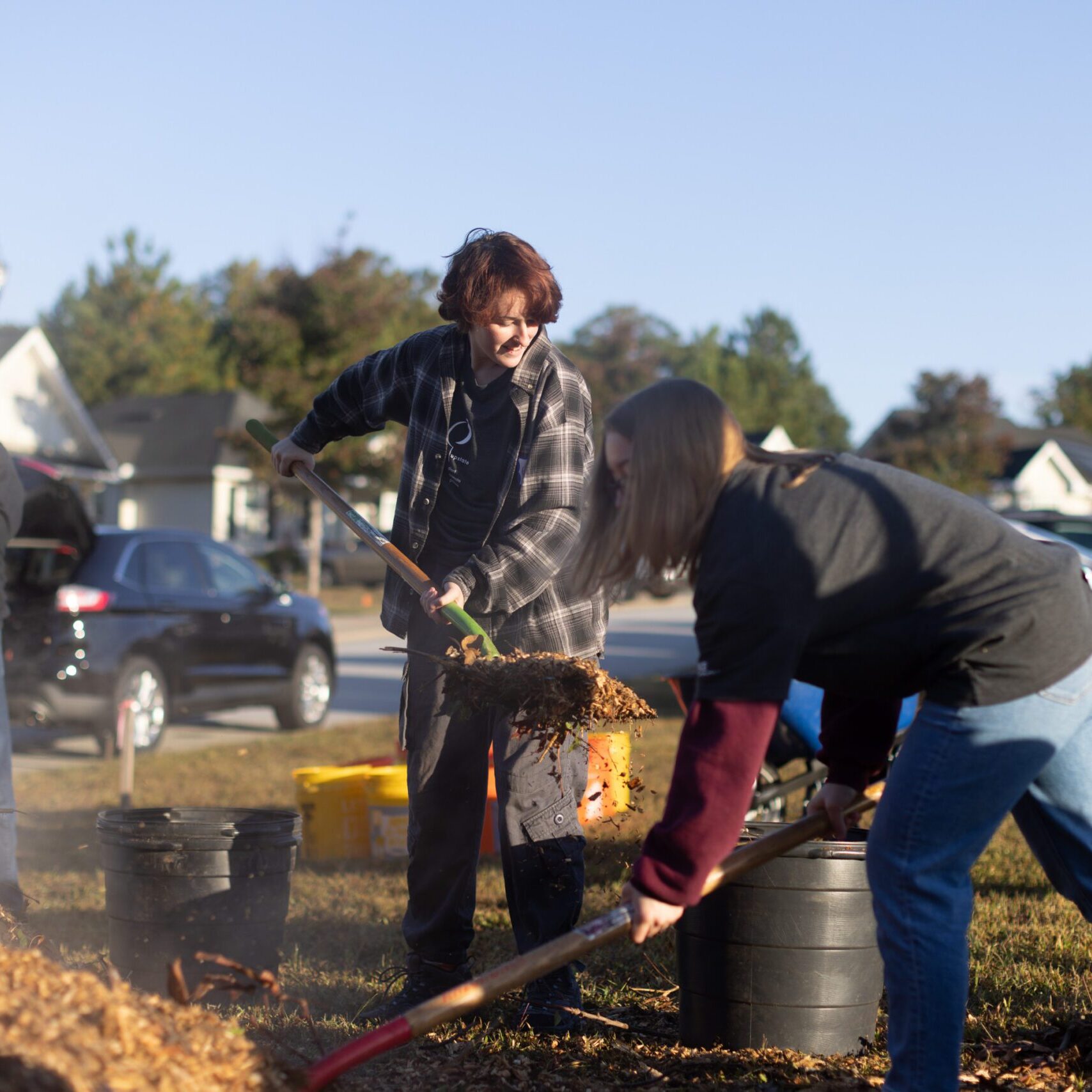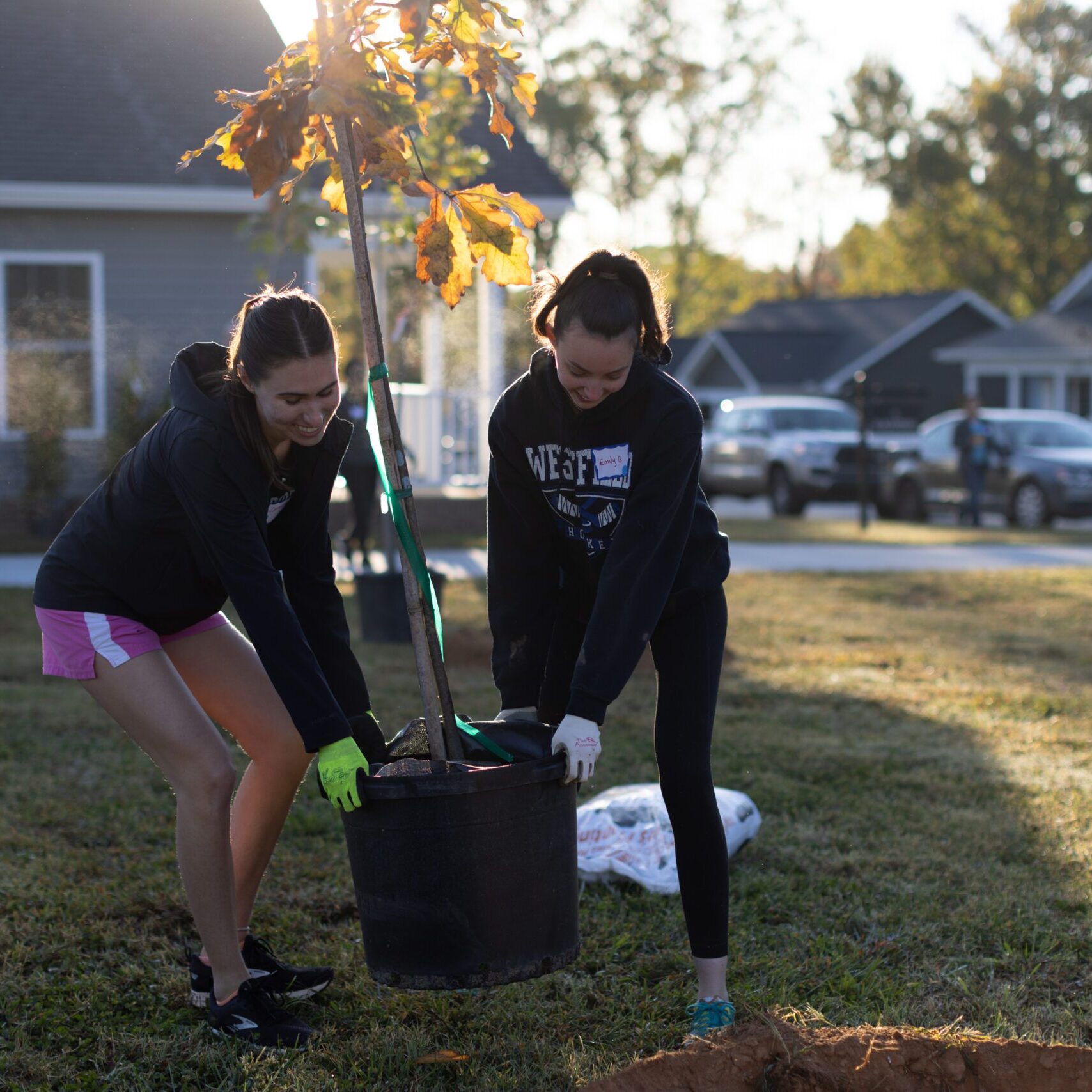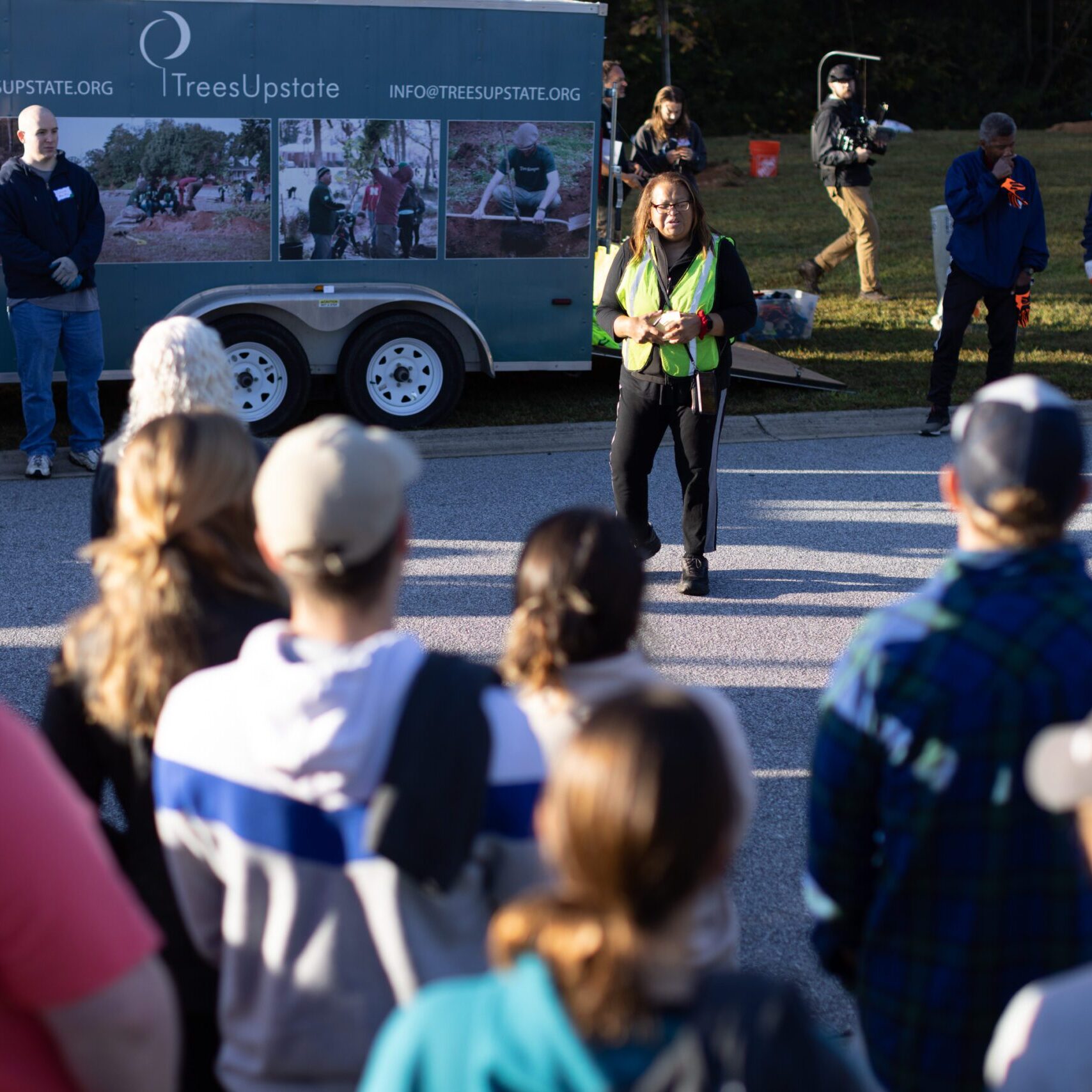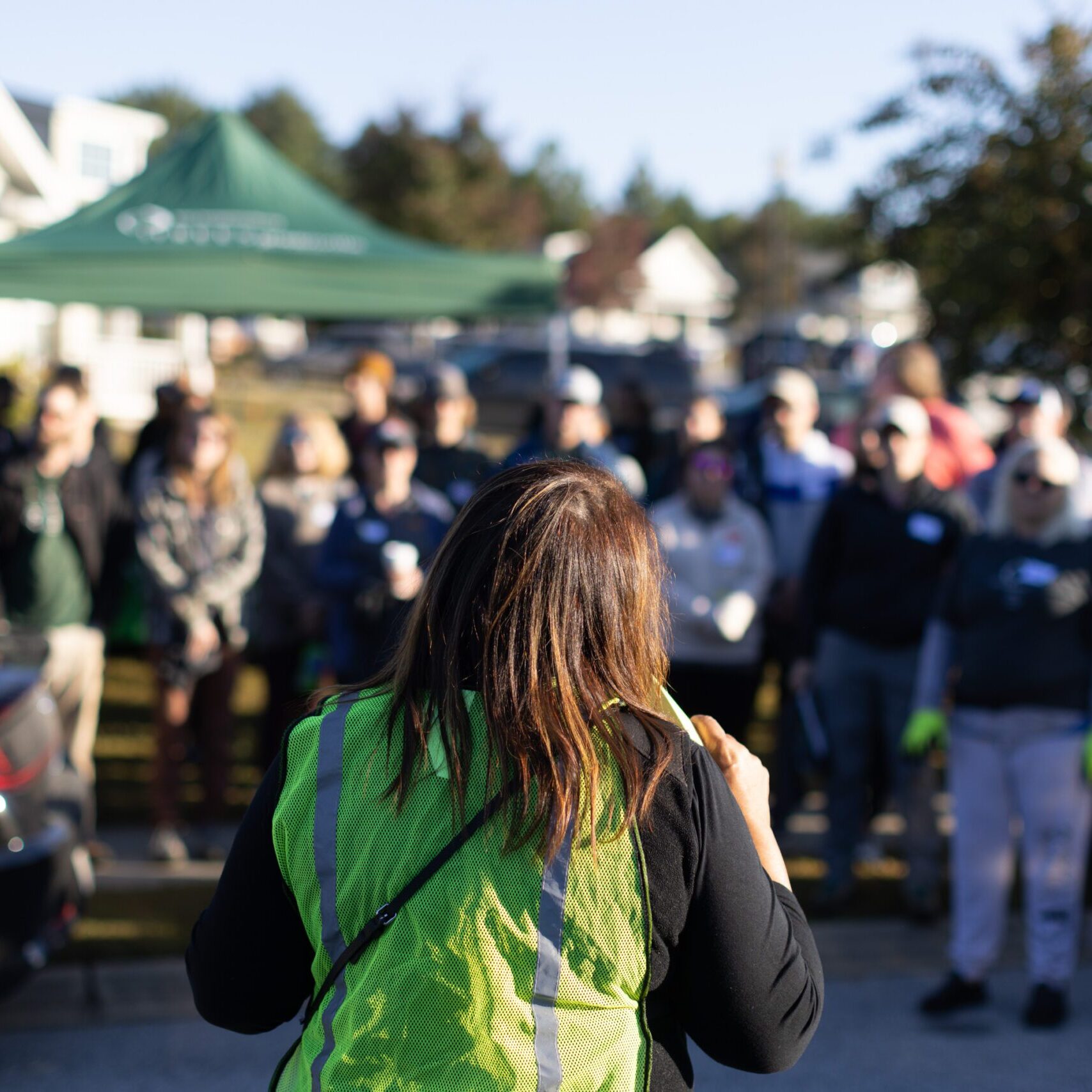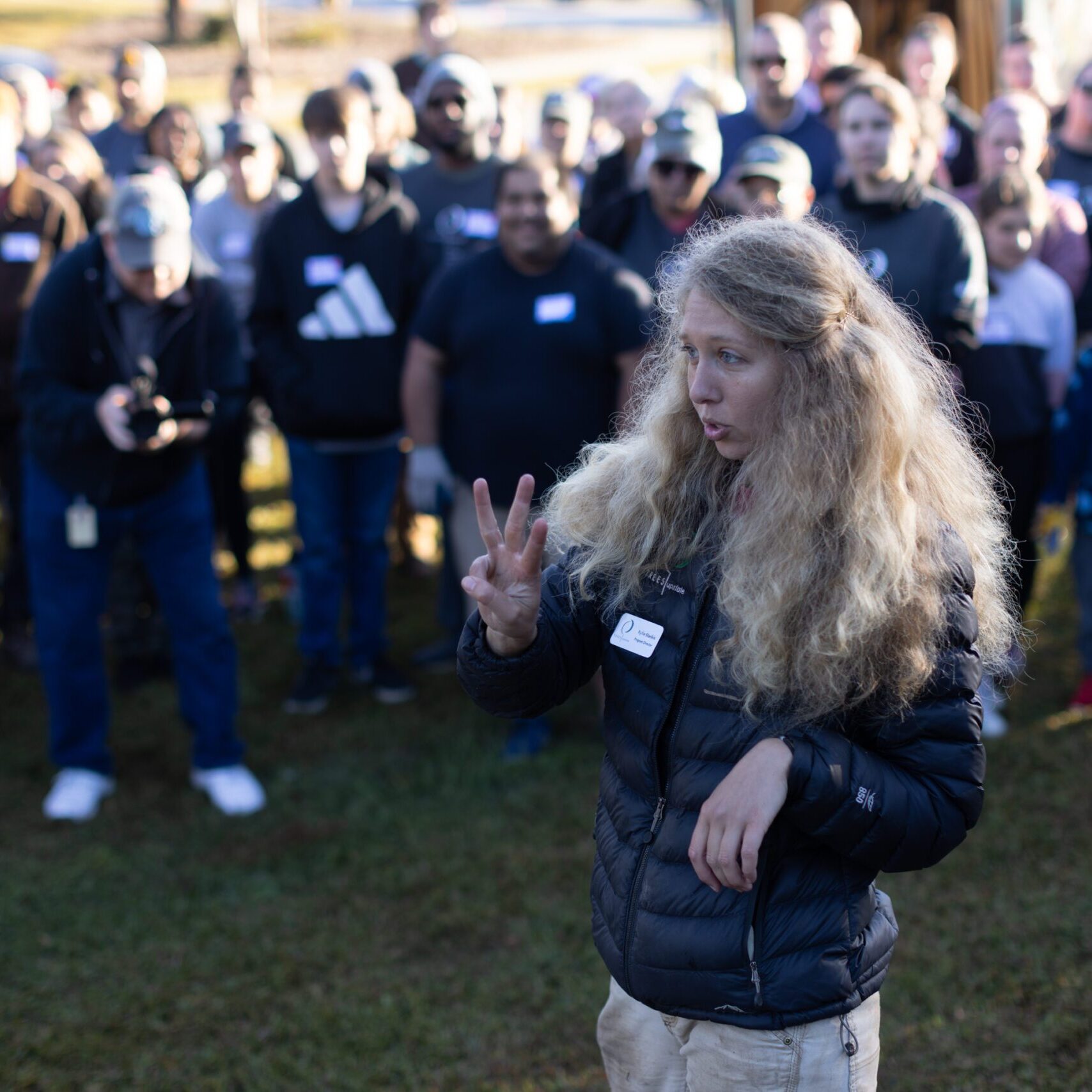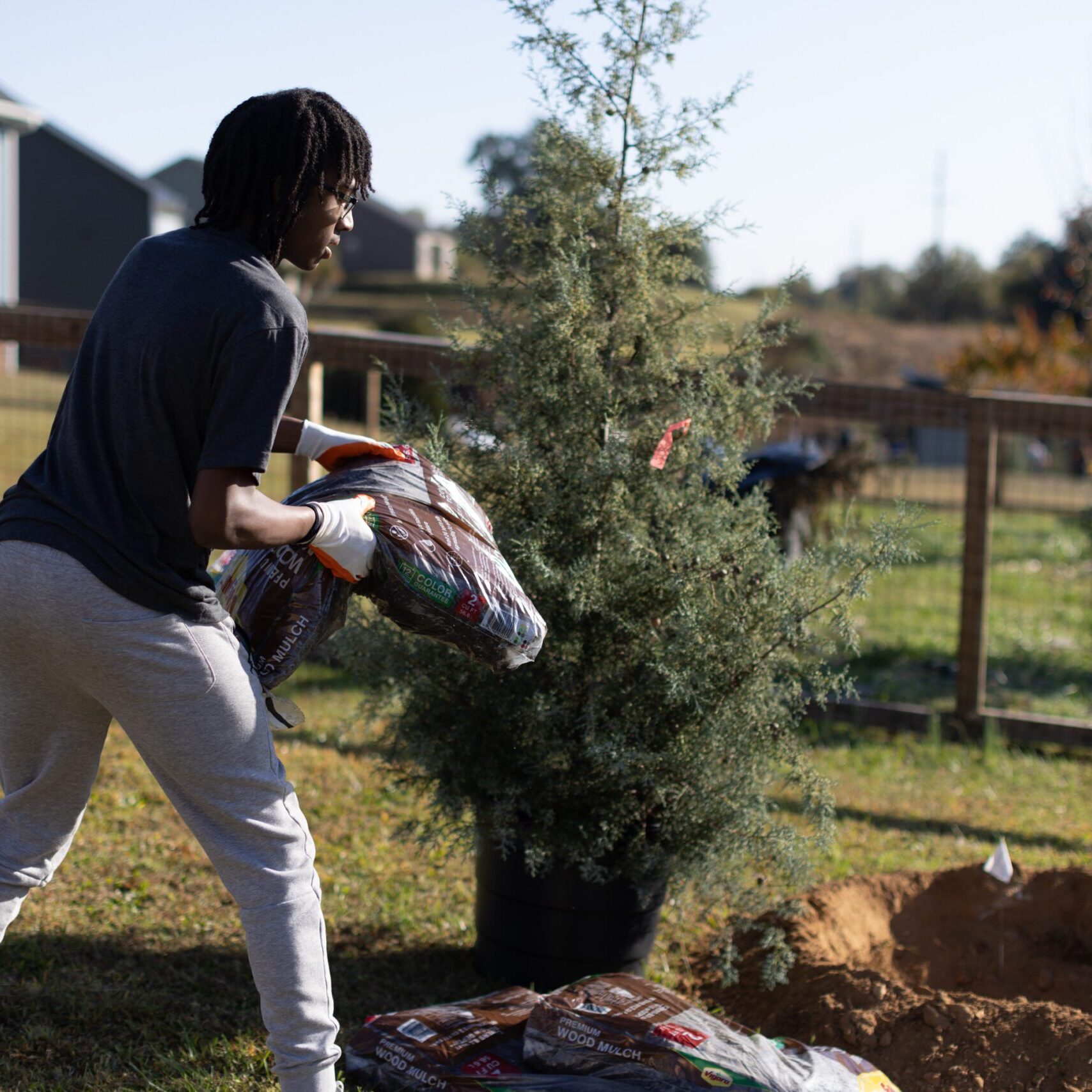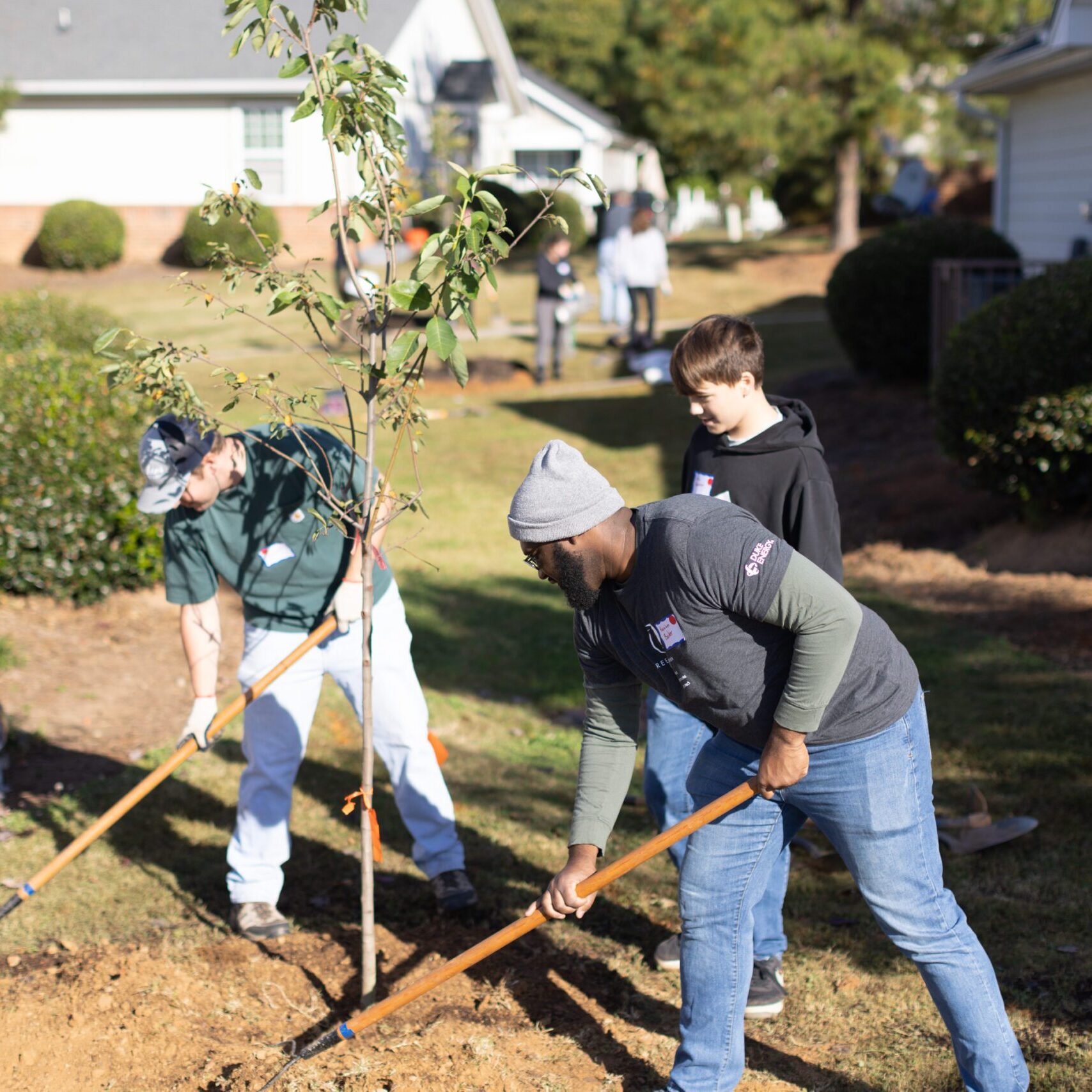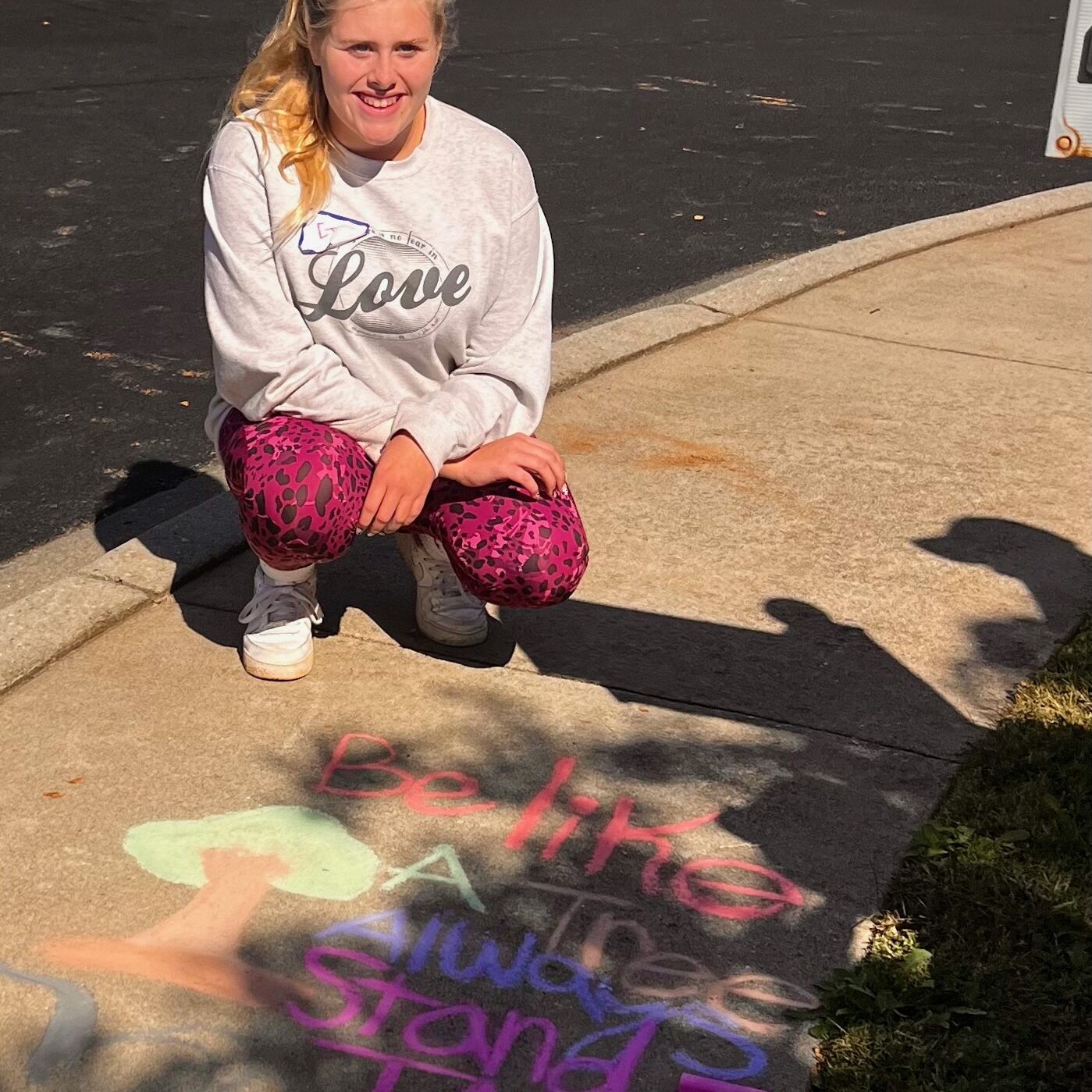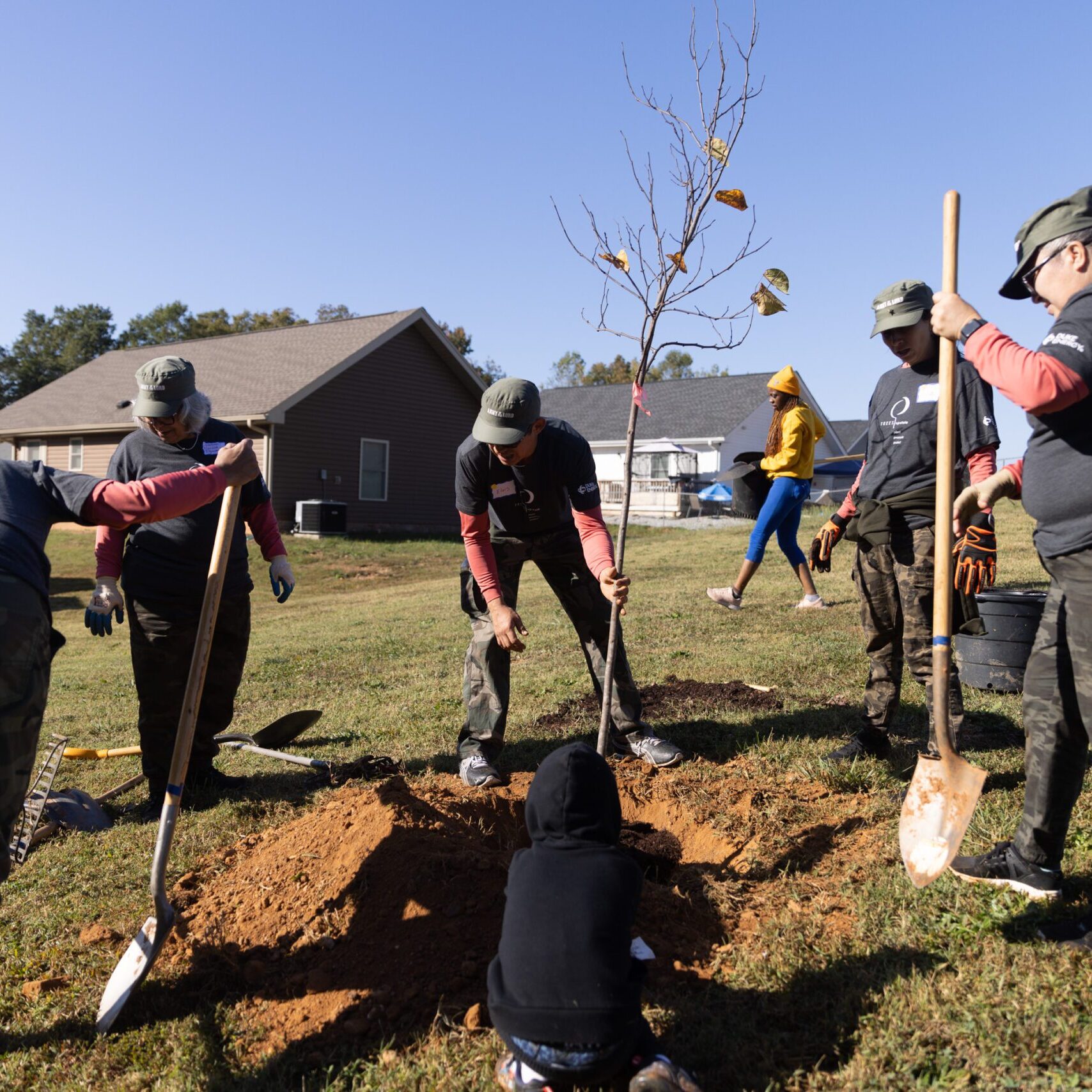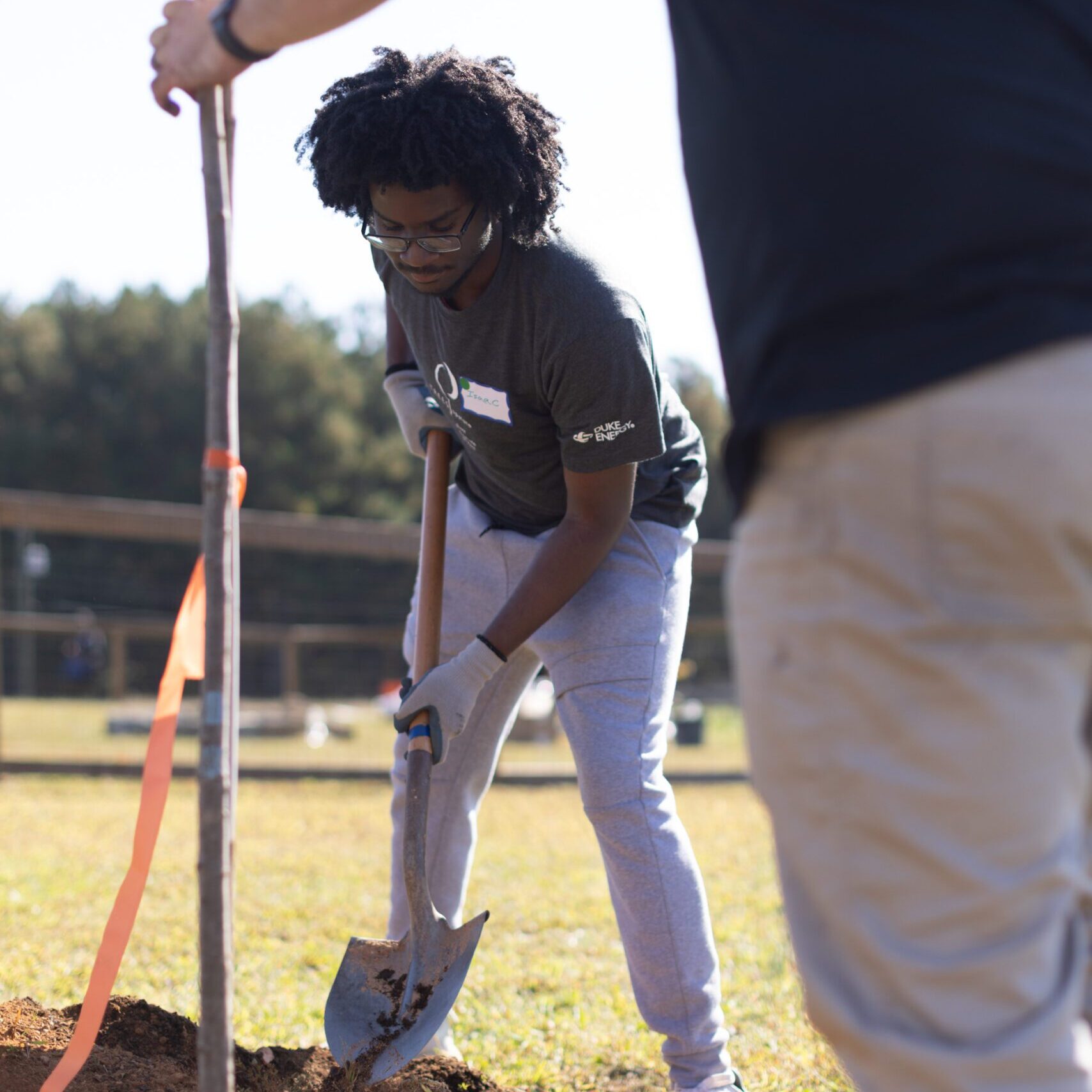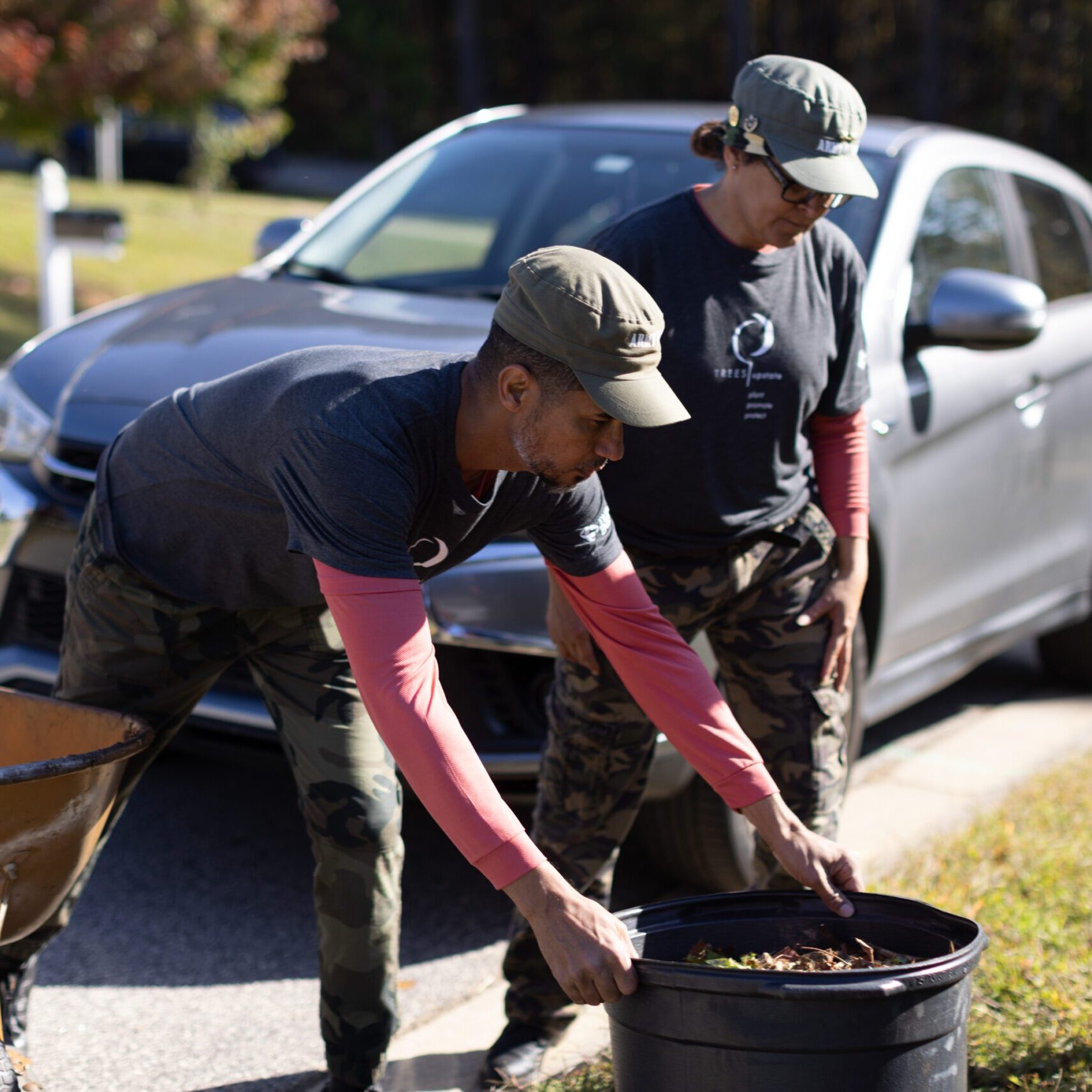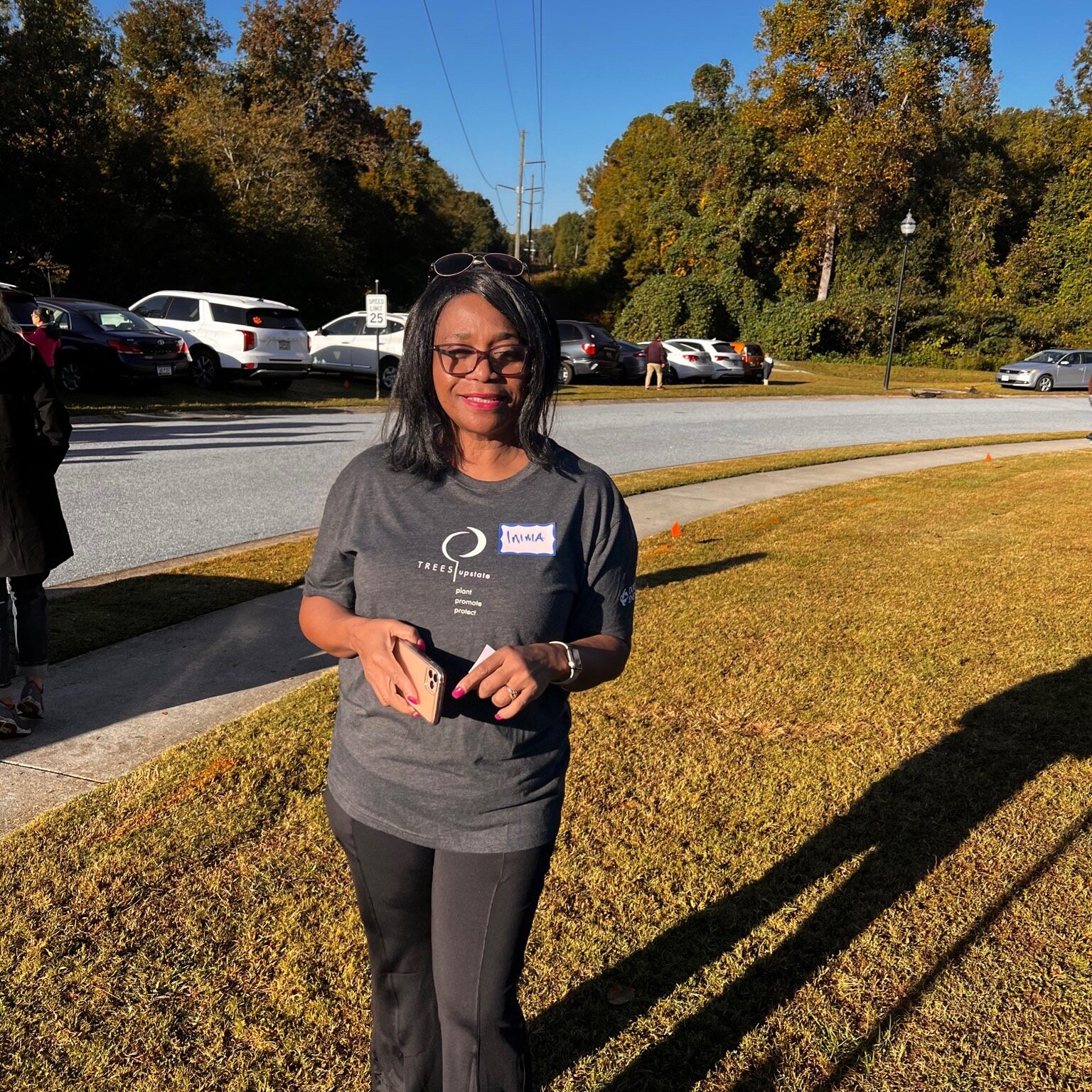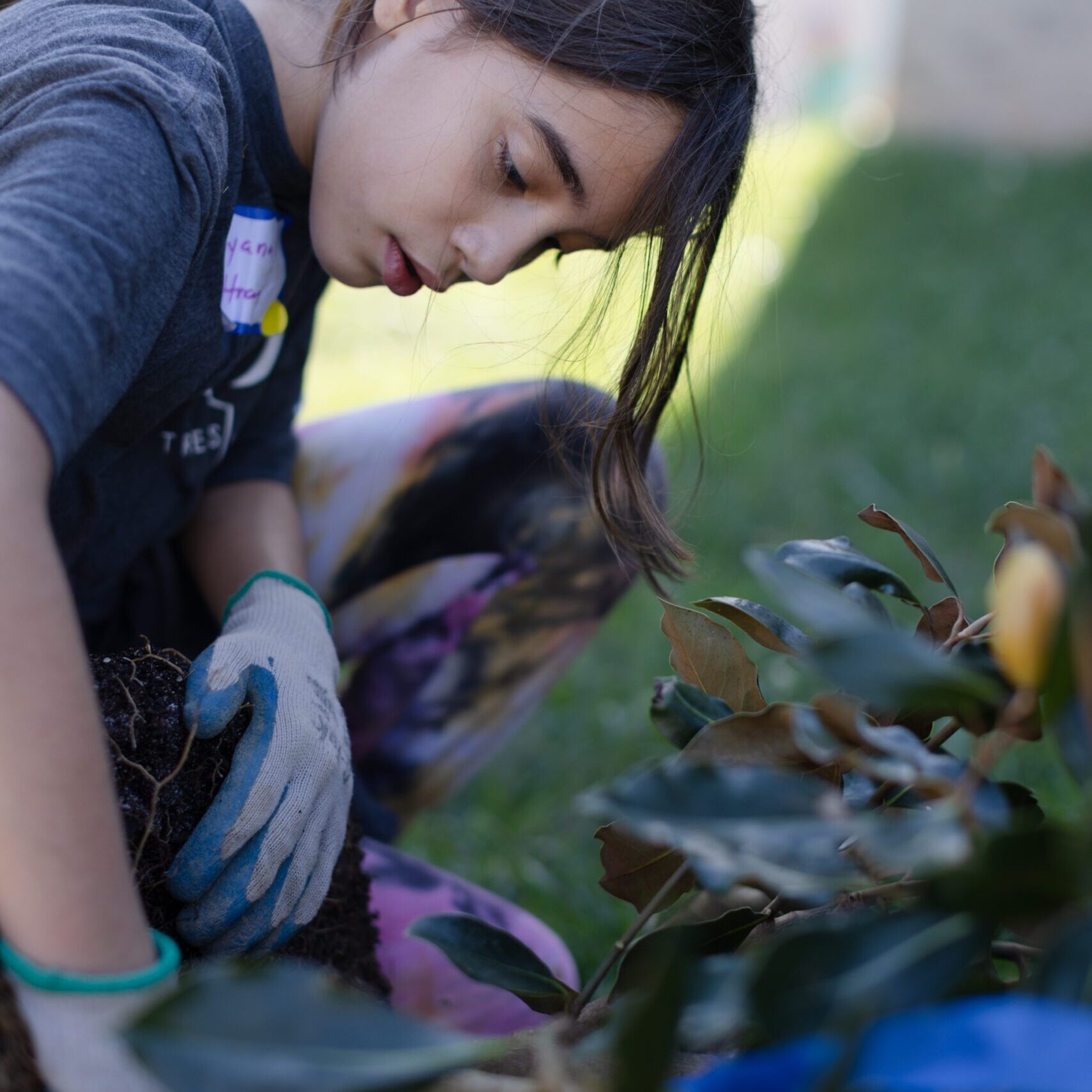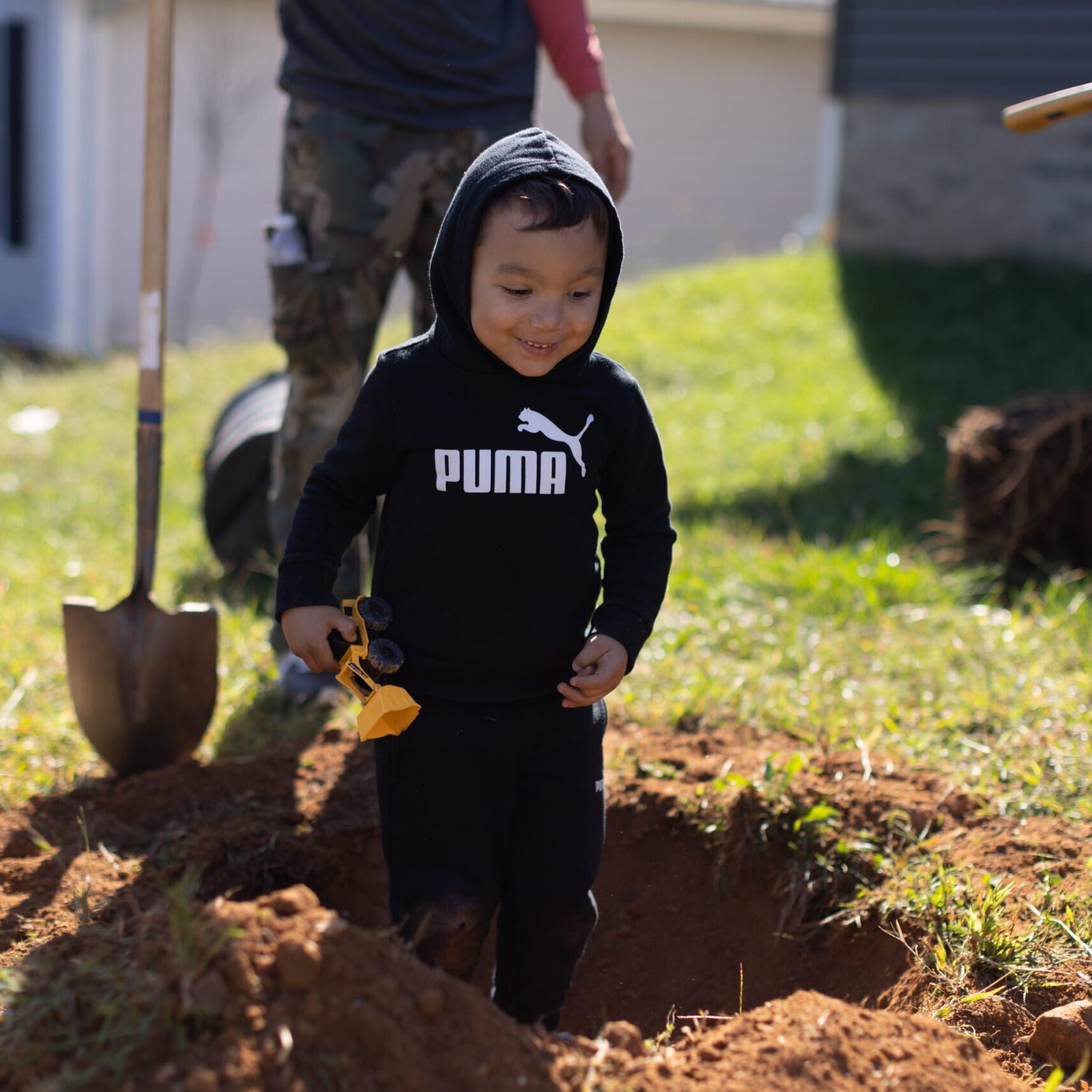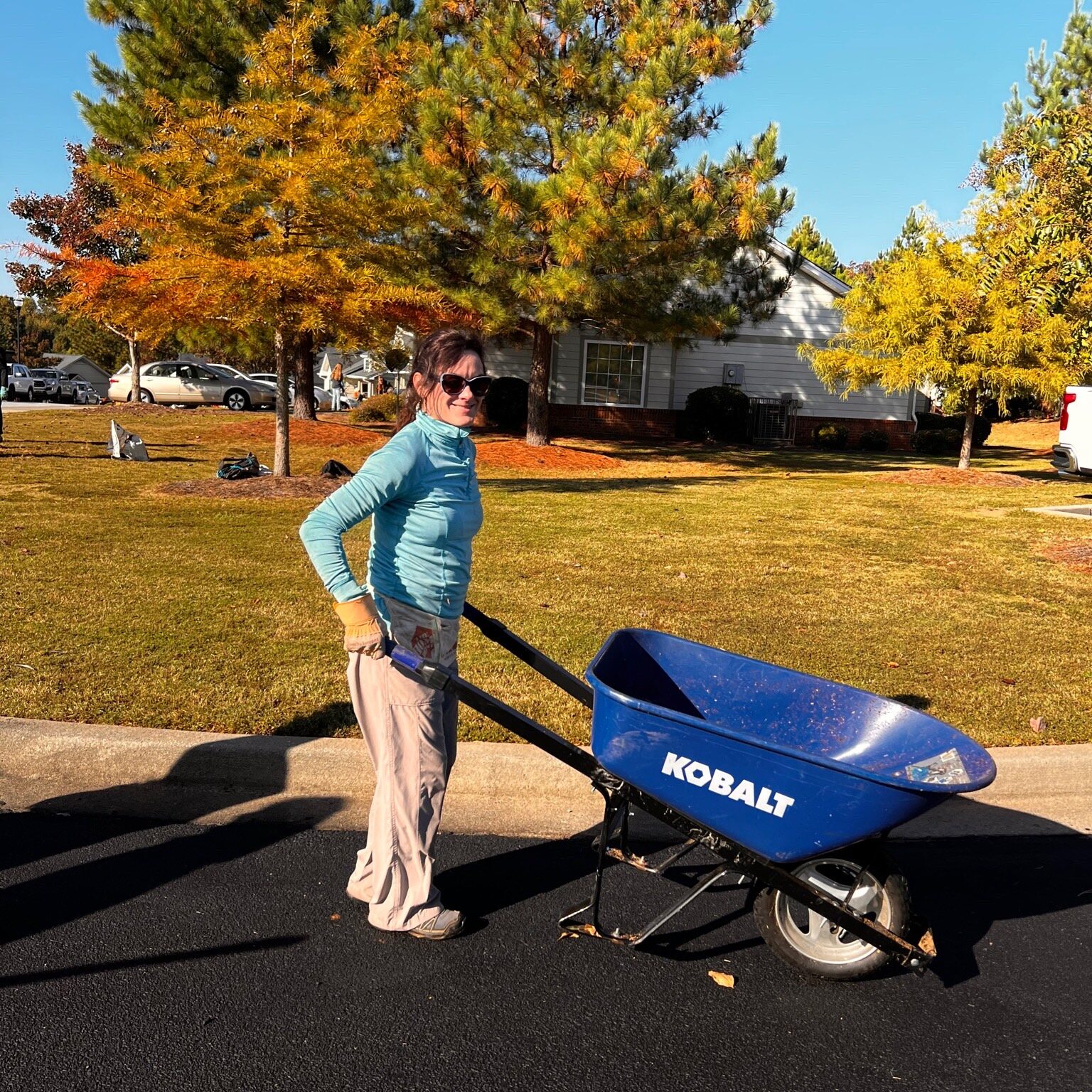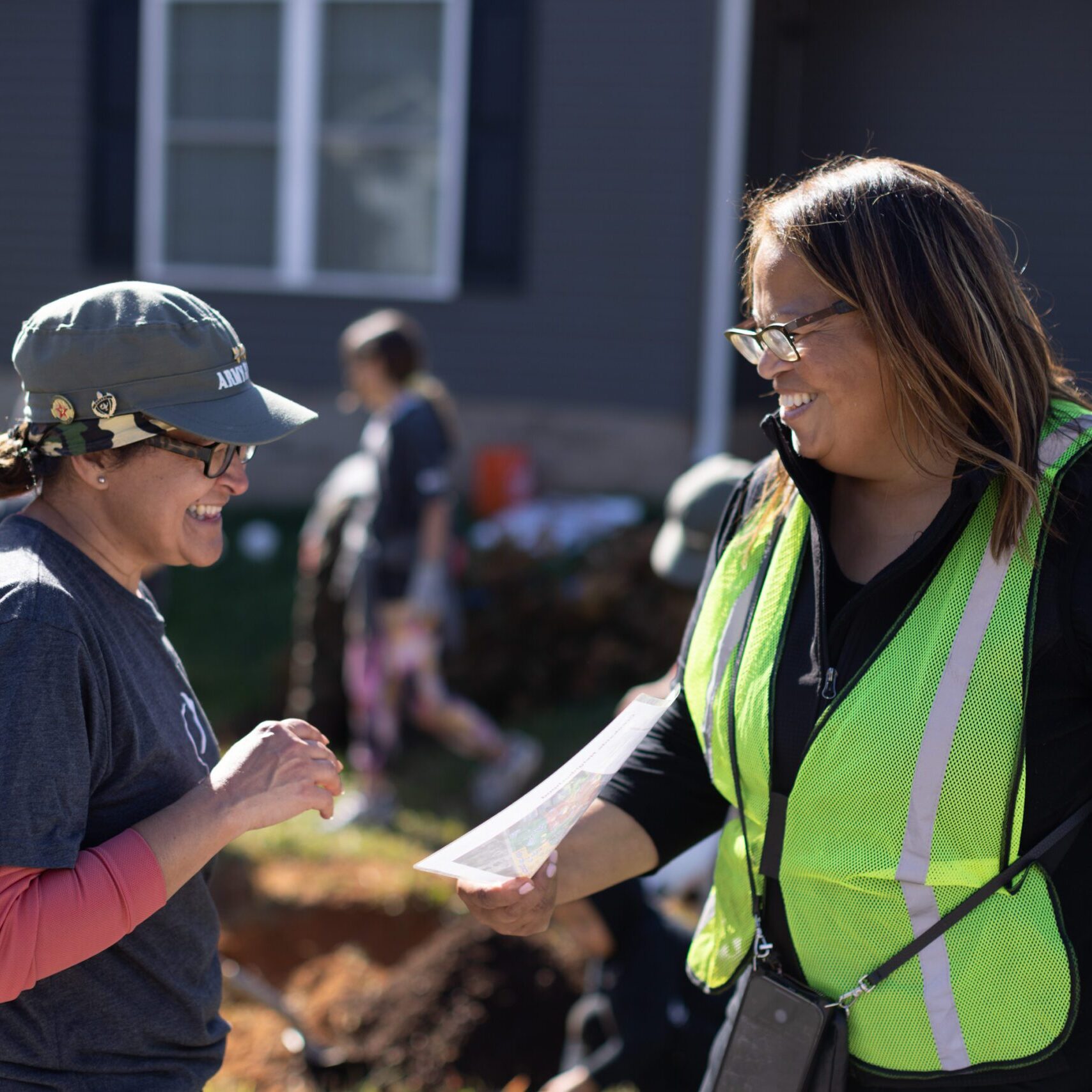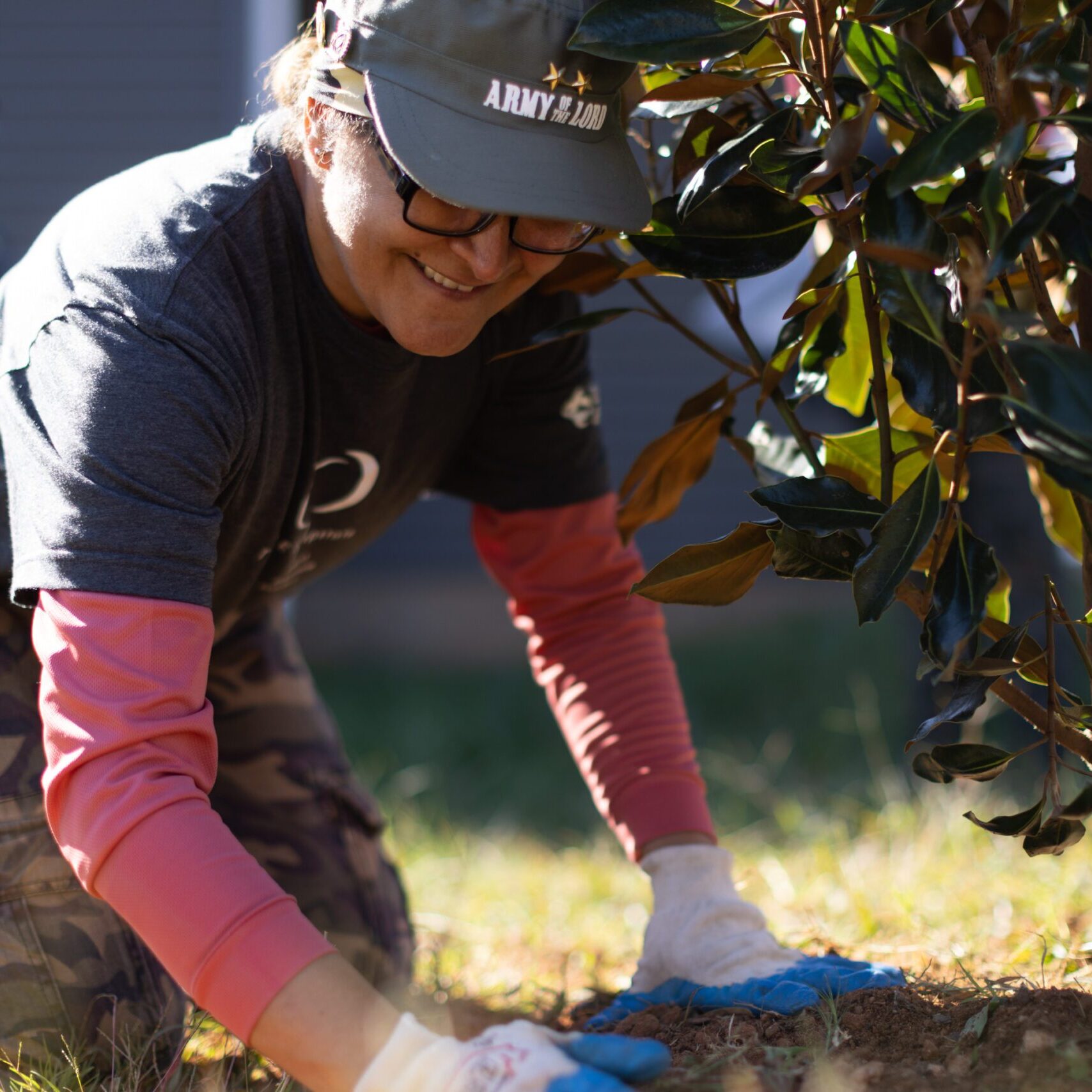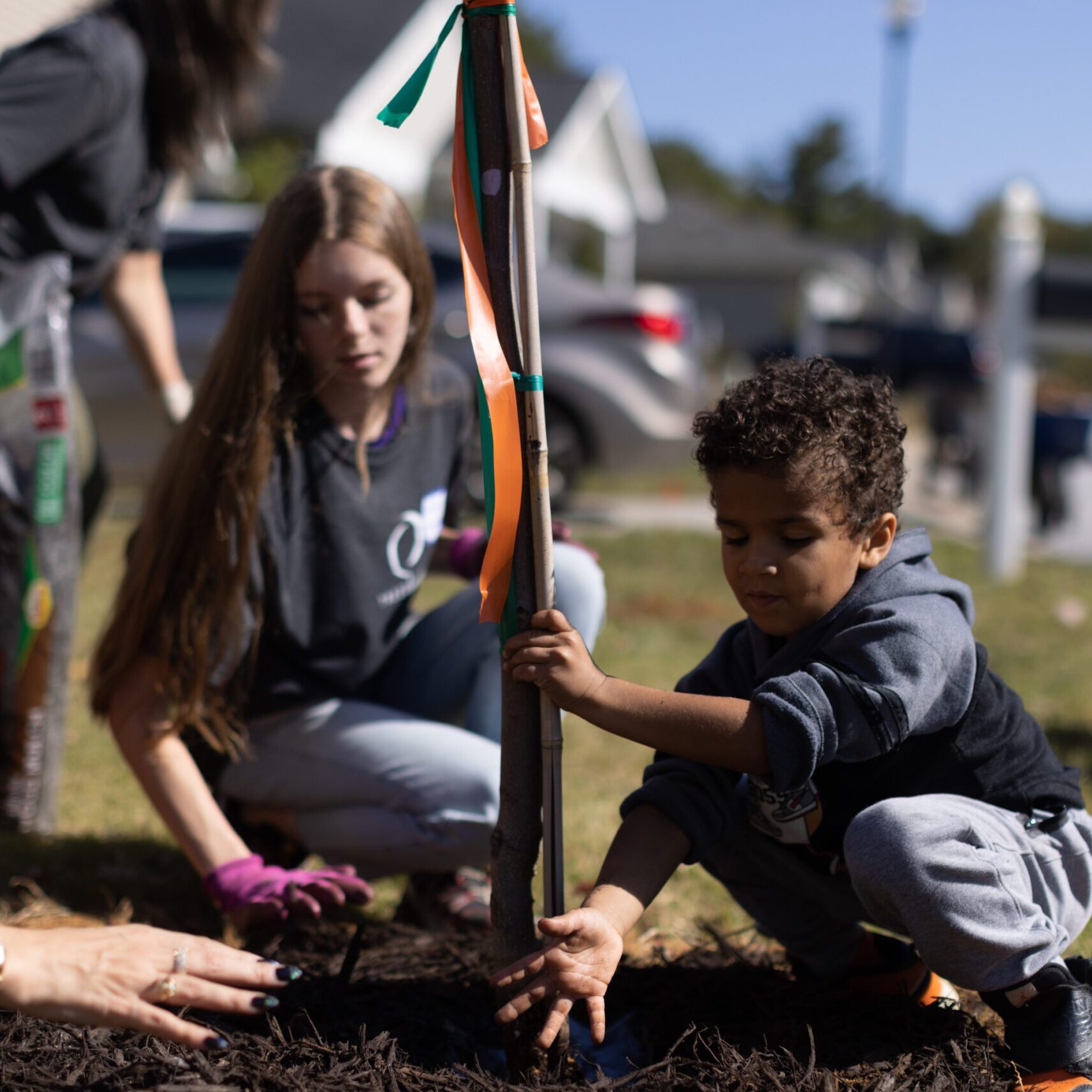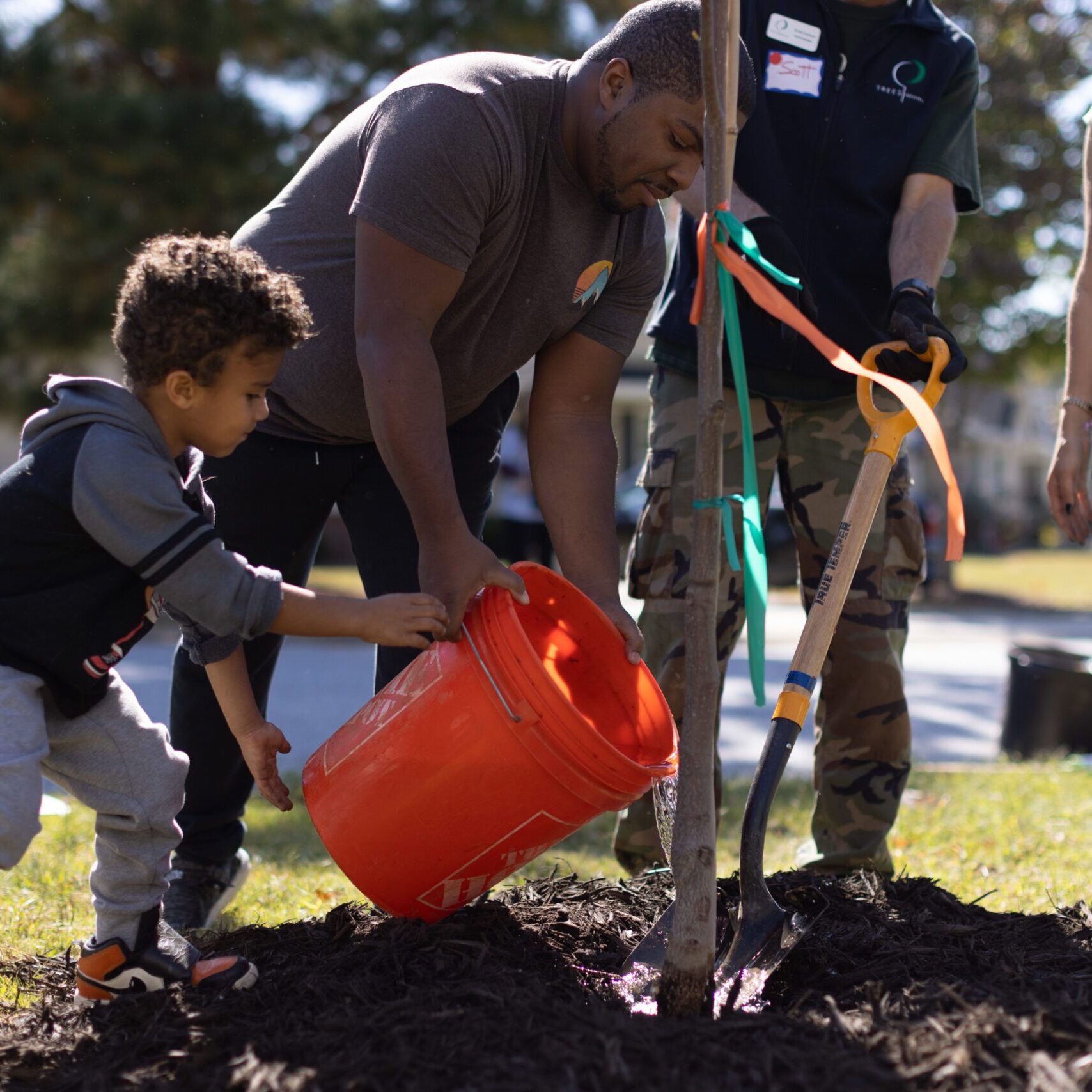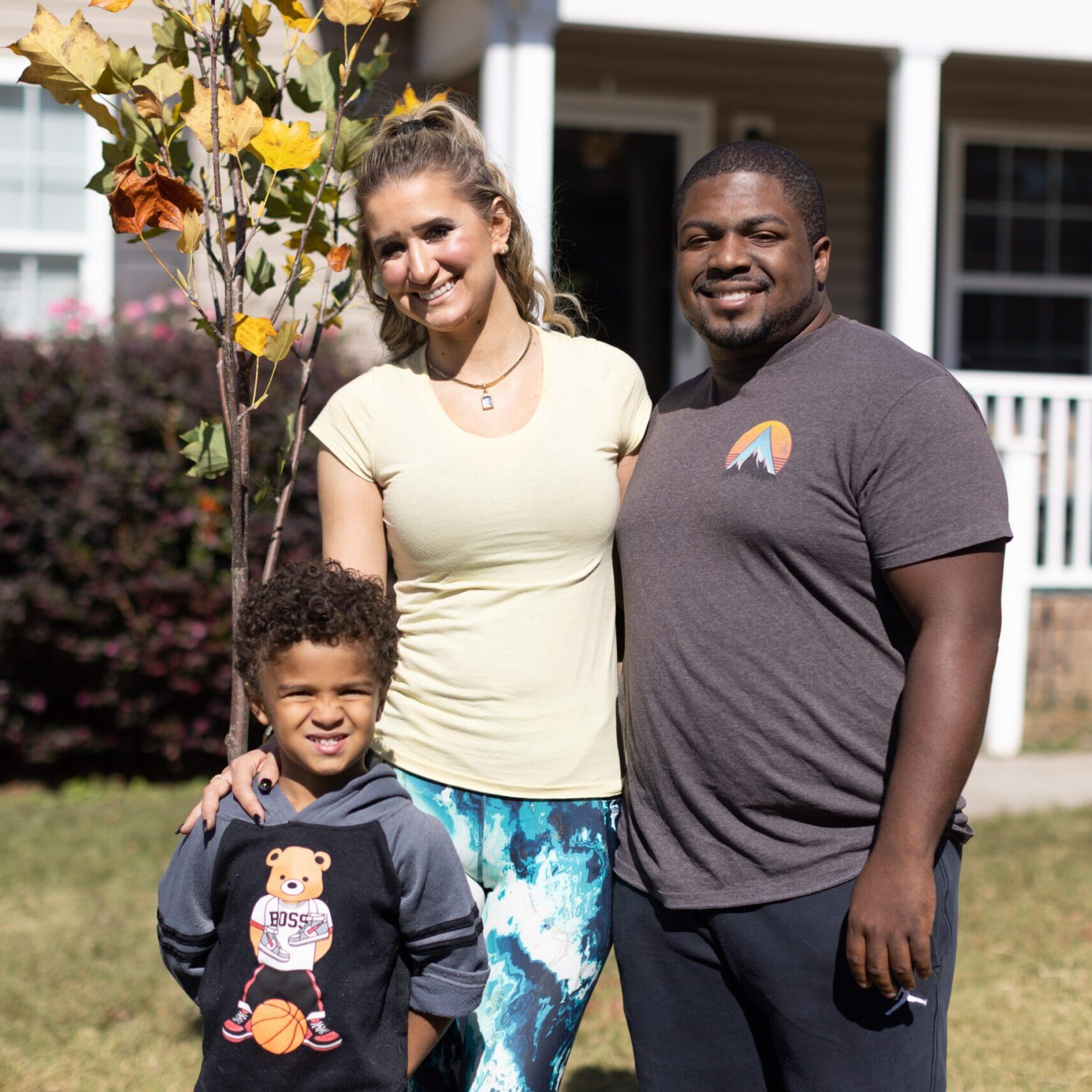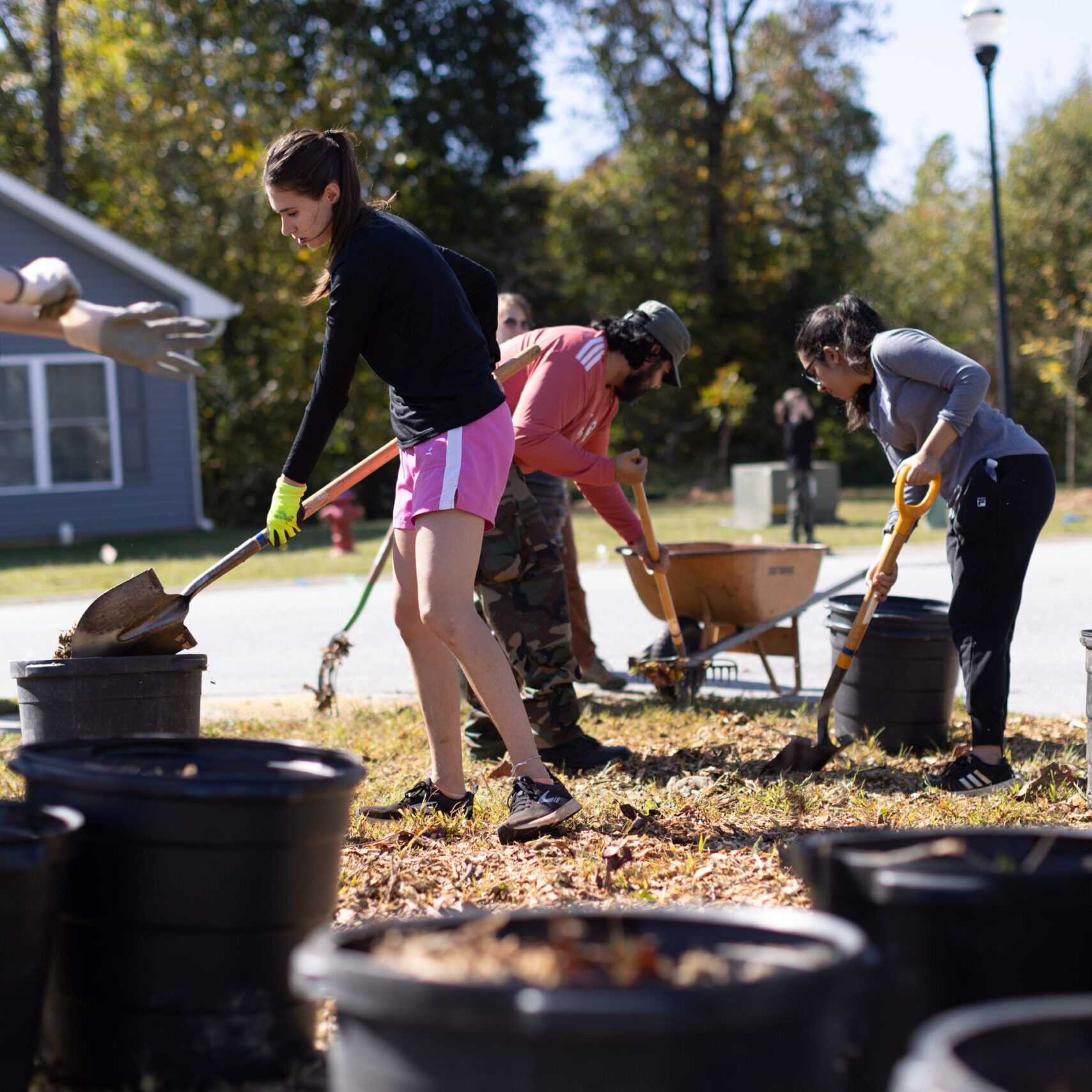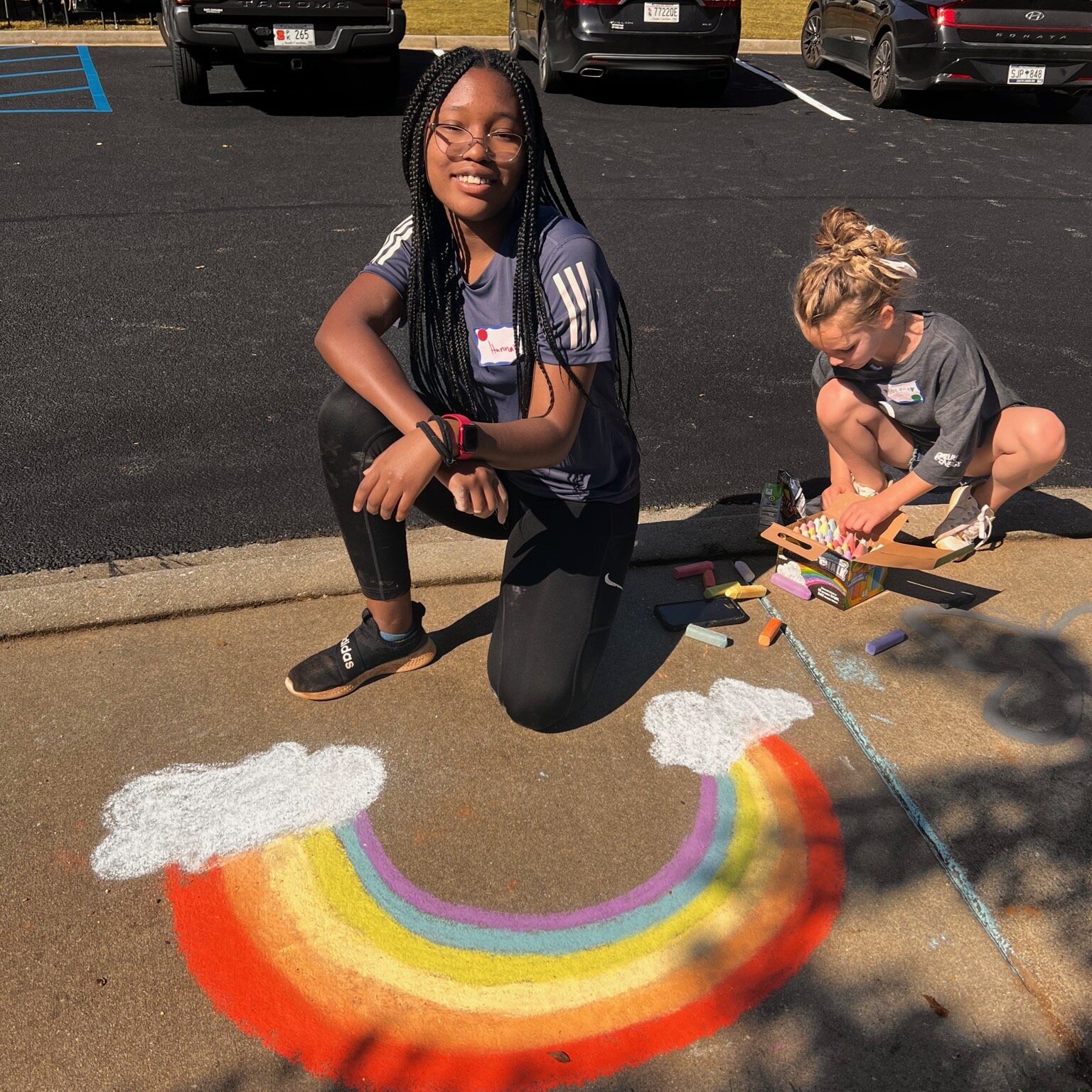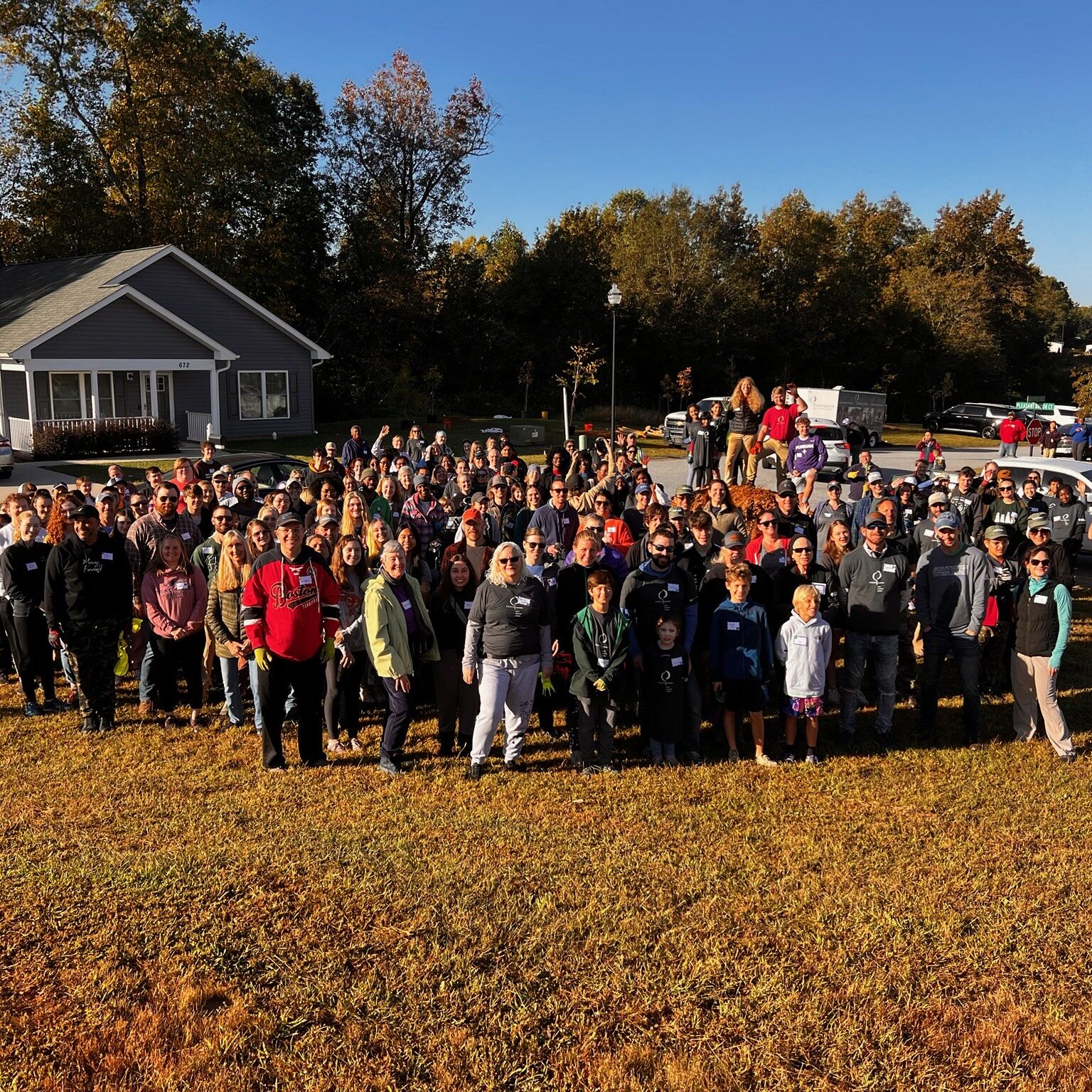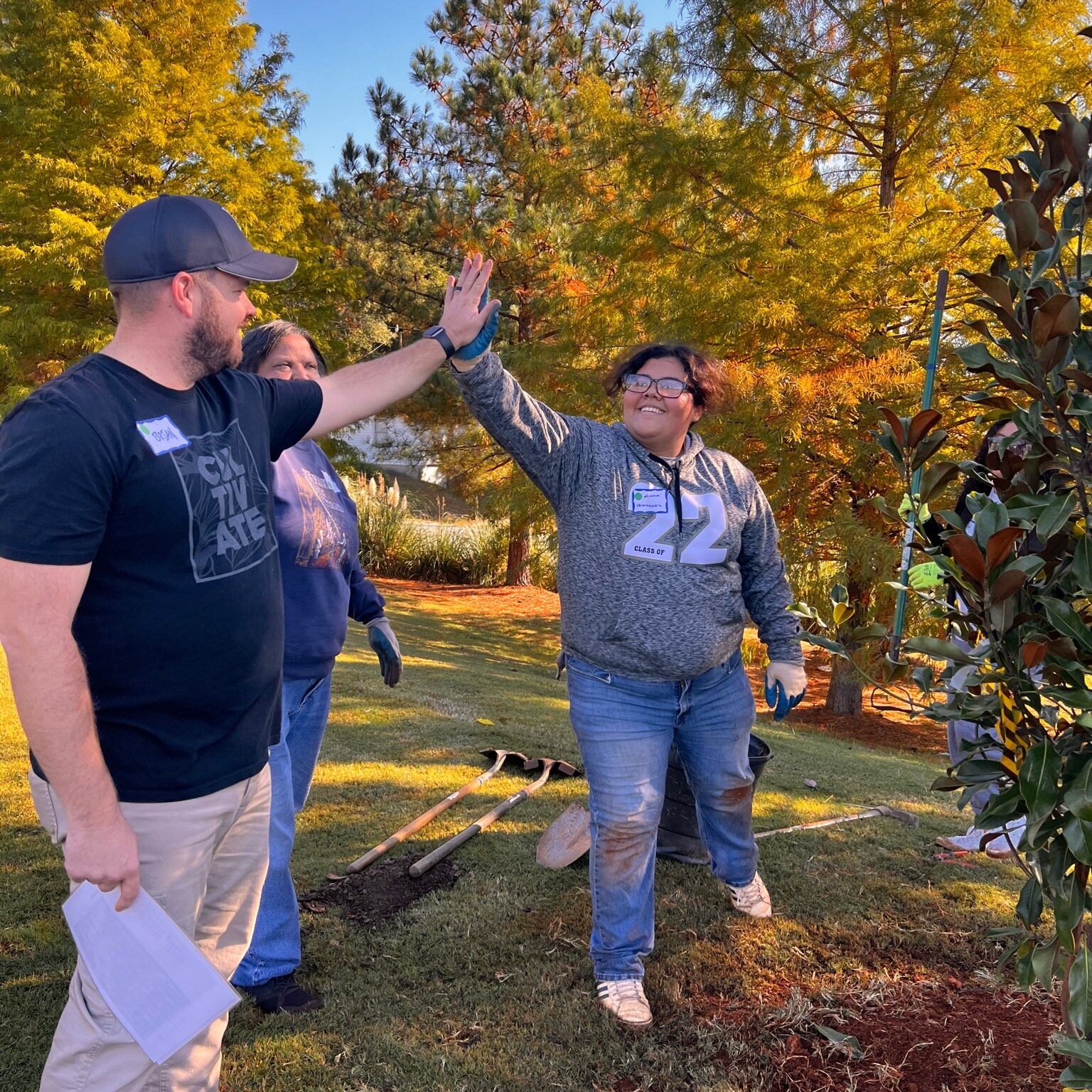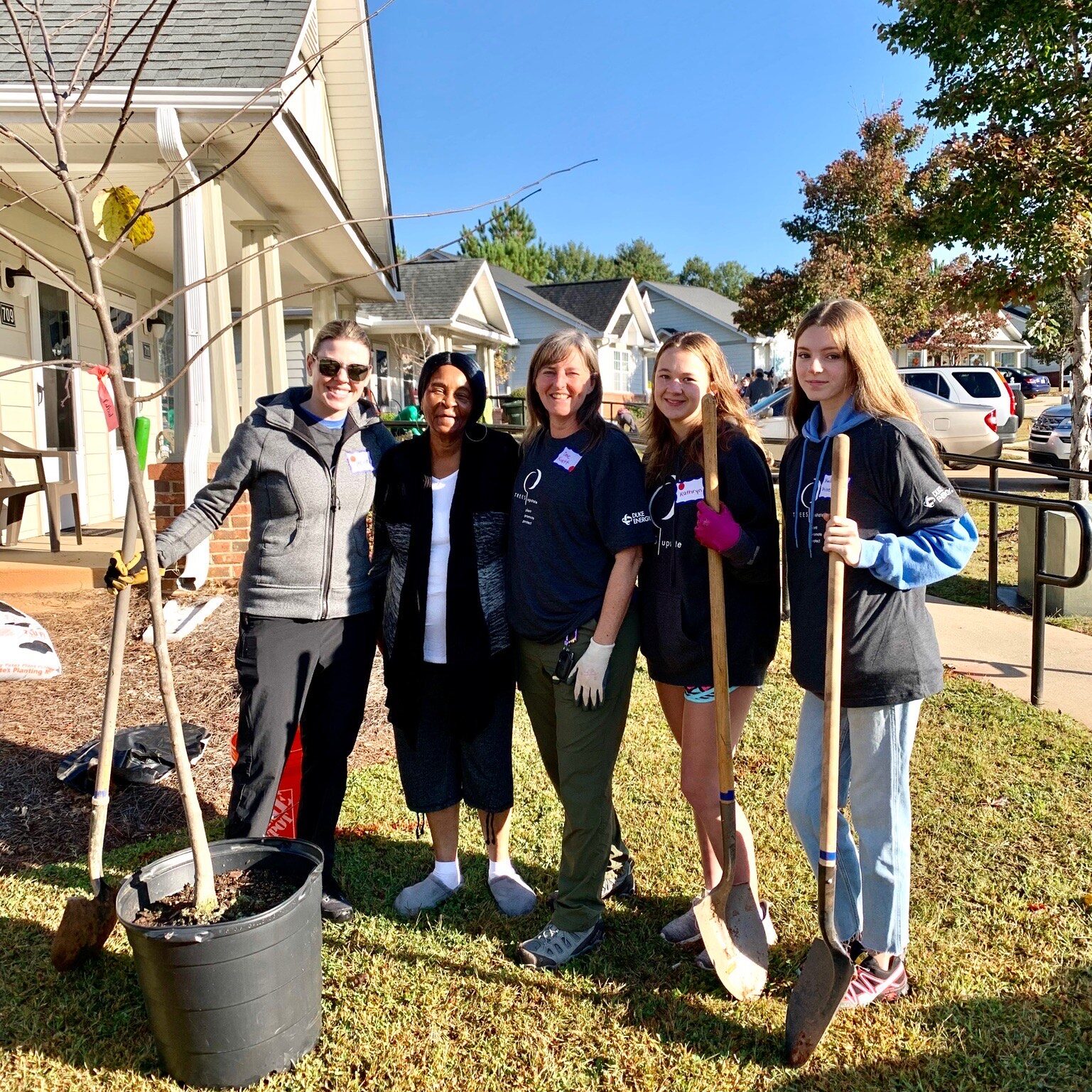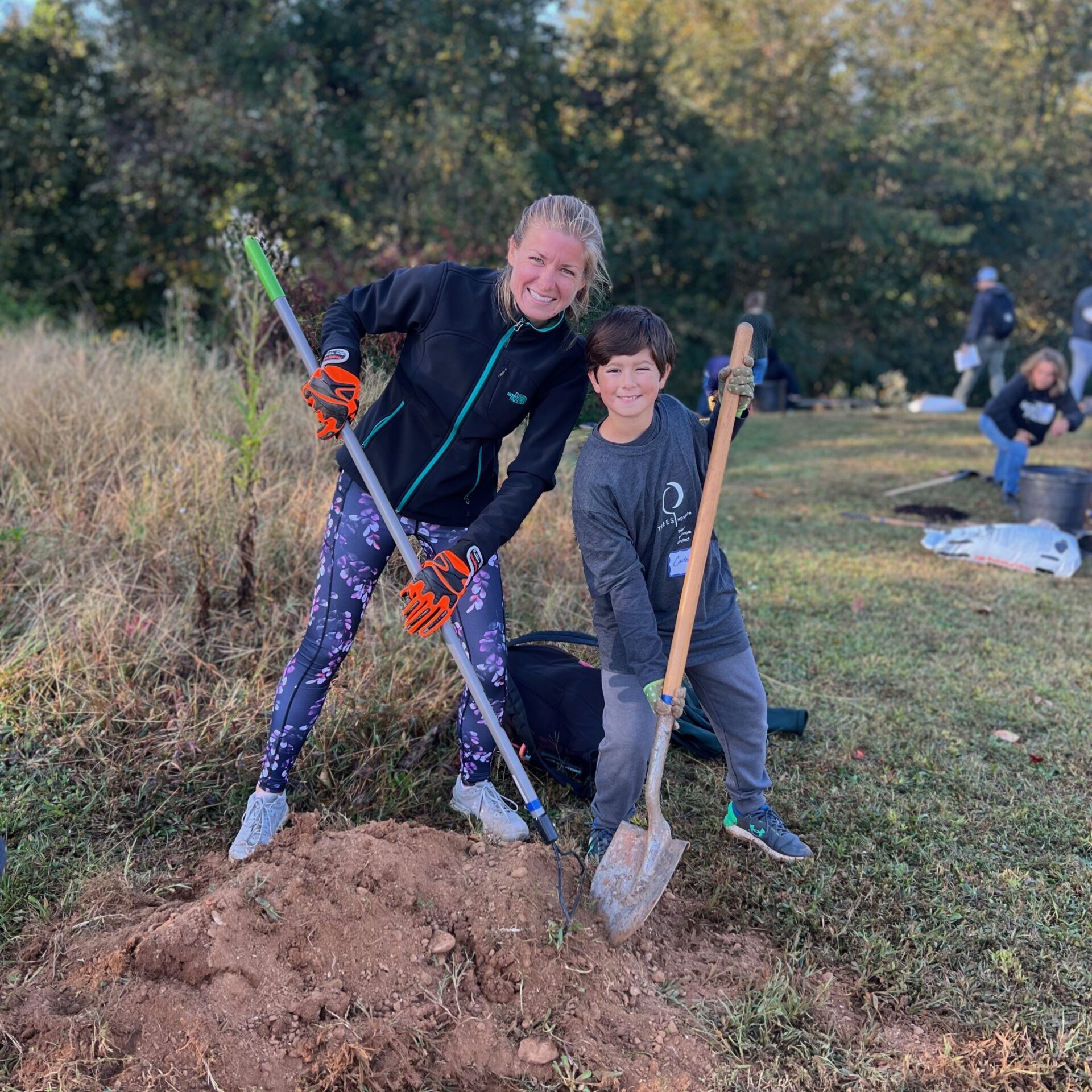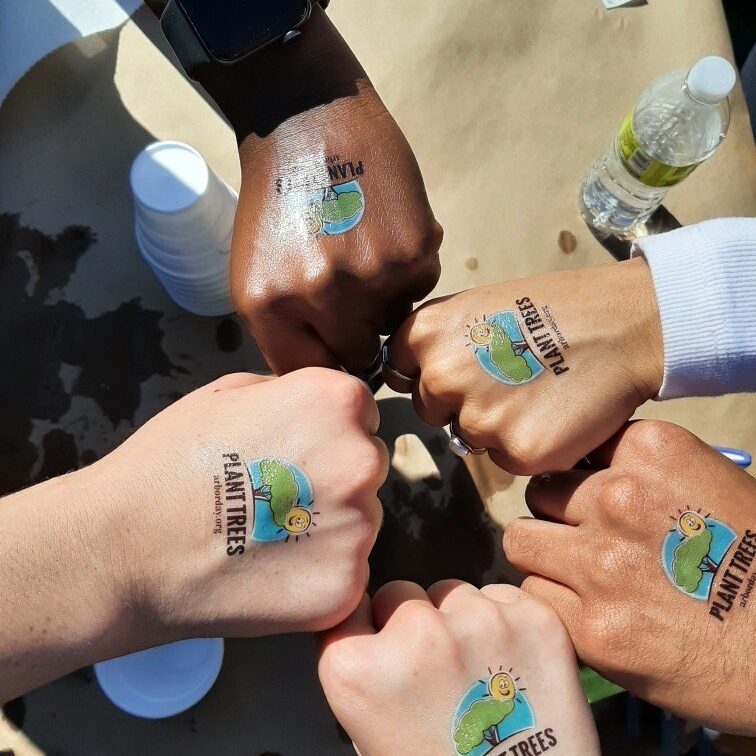Why NeighborWoods and Tree Equity?
Trees should not be an either-or option. When any neighborhood gets more trees we all win.
Cities that have a robust, ‘equitable-distributed network of trees’ are equipped with valuable assets that make all of our communities cooler, more liveable, and economically resilient.
Trees increase the quality of living for communities. This builds pride and ownership which leads to residents taking more interest in their neighborhood and homes. Surrounding communities also begin to take notice, building mutual respect and caring for one another.
That’s why in 2008 we launched our very first tree planting program called NeighborWoods with the goal of tree equity. Over the next two years TreesUpstate, known as TreesGreenville until 2019, was part of the revitalization of several urban neighborhoods that had been harmed by drugs, crime, and significantly lower rates of home ownership. Together with the Greenville County Redevelopment Authority we planted beautiful new trees in front yards, new single-family houses, and a tree-shaded park and playground where children and families could gather.
Starting in 2022 we increased our tree equity efforts with the hire of our first Community Outreach and Engagement Manager Evangeline Costa. Evangeline works with neighborhoods and residents to create smooth and seamless tree plantings in areas that need them most.
NeighborWoods Program Goals:
- Build trust with community partners and developers to educate on the benefits of trees, collaborate to make trees a part of the solution, and empower community members to become tree advocates.
- Implement customized urban forestry strategies for communities and neighborhood associations to beautify their neighborhoods, experience the many benefits of trees, and increase their overall canopy.
- Develop an optimal staffing structure that offers workforce development, a job stream, and financially valuable landscape certification for 18 to 24 year-olds who live in special interest areas.
- Provide ongoing tree care so that homeowners can maintain ownership value and are more likely to not sell or foreclose on their house.
Planting in Creekside
Frequently Asked Questions
Can I plant a tree in my front yard or backyard?
Yes! While our goal is to plant front yard shade trees for maximum community benefit, we will plant a tree anywhere on your property.
I am looking for resources to reforest my land. Can TreesUpstate help with this?
Unfortunately, TreesUpstate does not assist homeowners with reforestation projects on private property at this time. For bare root seedling purchases, we recommend ArborGen. You can also attend a tree giveaway for up to 2 free trees per household.
What communities qualify for a Neighborwoods project?
We want to help every neighborhood plant more trees, but our resources are limited! Project requests are prioritized by need and current tree canopy in the neighborhood. For selected neighborhoods, trees are free and there is no cost to the resident. For a volunteer tree planting day, the neighborhood must be walkable from end to end in 15-20 minutes.
For neighborhoods with less demonstrated need, we offer fee for tree programs for 15+ gallon sized trees. Or, residents are welcome to participate in our tree giveaway program and pick up free 3 gallon trees.
What resources are available to share Neighborwoods project info with my neighbors?
Contact us to see if your neighborhood qualifies for a community tree planting / tree giveaway project. We have templates of fliers, letters, doorhangers, social media posts, and neighborhood signs to help get the word out in your neighborhood!
What is a tree diaper?
A tree diaper is a watering mat that lays around the trunk of the tree under the mulch. The tree diaper can absorb rainwater and can retain water for up to one month, slowly dripping it into the root zone of the tree. It lasts for 5 years.
What species of trees are available?
We plant over 50 different species and cultivars annually, but availability is determined by our partner nurseries. Our focus is on planting large native canopy trees. We work with the neighborhood champion to build a species list for each neighborhood. Examples of species we plant include: oak species, tulip poplar, black tupelo, american hornbeam, eastern red cedar, serviceberry, Eastern redbud, magnolia, & baldcypress.
How many trees does one household qualify for?
One household can plant up to 2 trees.
Can I request a specific species not on your list?
Unfortunately, we cannot accommodate specific requests not on your neighborhood availability list.


